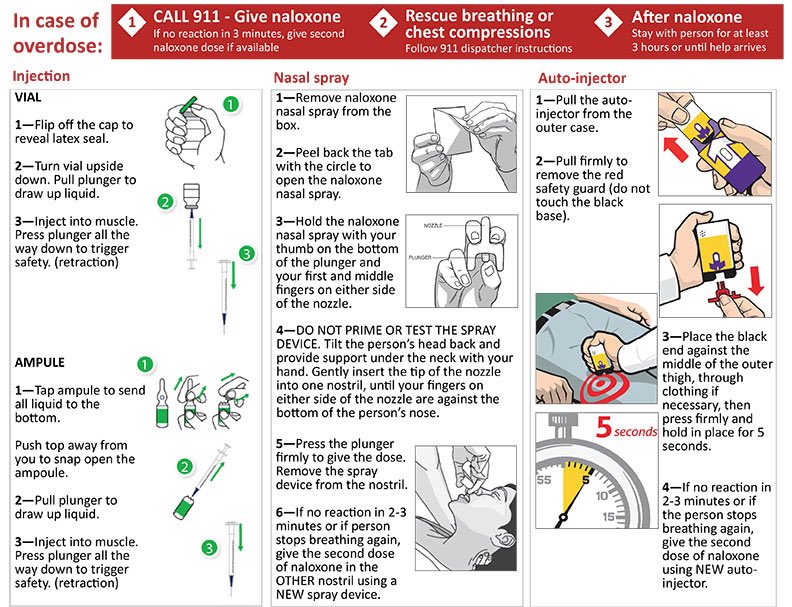How do nasal sprays work. Nasal Sprays for Allergy Relief: Types, Mechanisms, and Effectiveness
How do nasal sprays alleviate allergy symptoms. What are the different types of nasal sprays available. Which nasal spray is most effective for allergies. Are there any side effects associated with nasal spray use. How long does it take for nasal sprays to work.
Understanding Nasal Sprays: A Comprehensive Guide
Nasal sprays are specialized medications designed to target and alleviate nasal symptoms such as inflammation, congestion, and runny nose. These conditions often stem from seasonal allergies, also known as allergic rhinitis or hay fever. Unlike oral allergy medications, nasal sprays are administered directly into the nasal passages using a spray bottle or pressurized canister, allowing for targeted relief.
Why Choose Nasal Sprays for Allergy Relief?
Nasal sprays offer several advantages for allergy sufferers:
- Direct application to affected areas
- Faster onset of action compared to some oral medications
- Reduced risk of systemic side effects
- Convenient and easy to use
The Four Main Types of Medicated Nasal Sprays
There are four primary categories of medicated nasal sprays available, each with its unique mechanism of action and benefits:
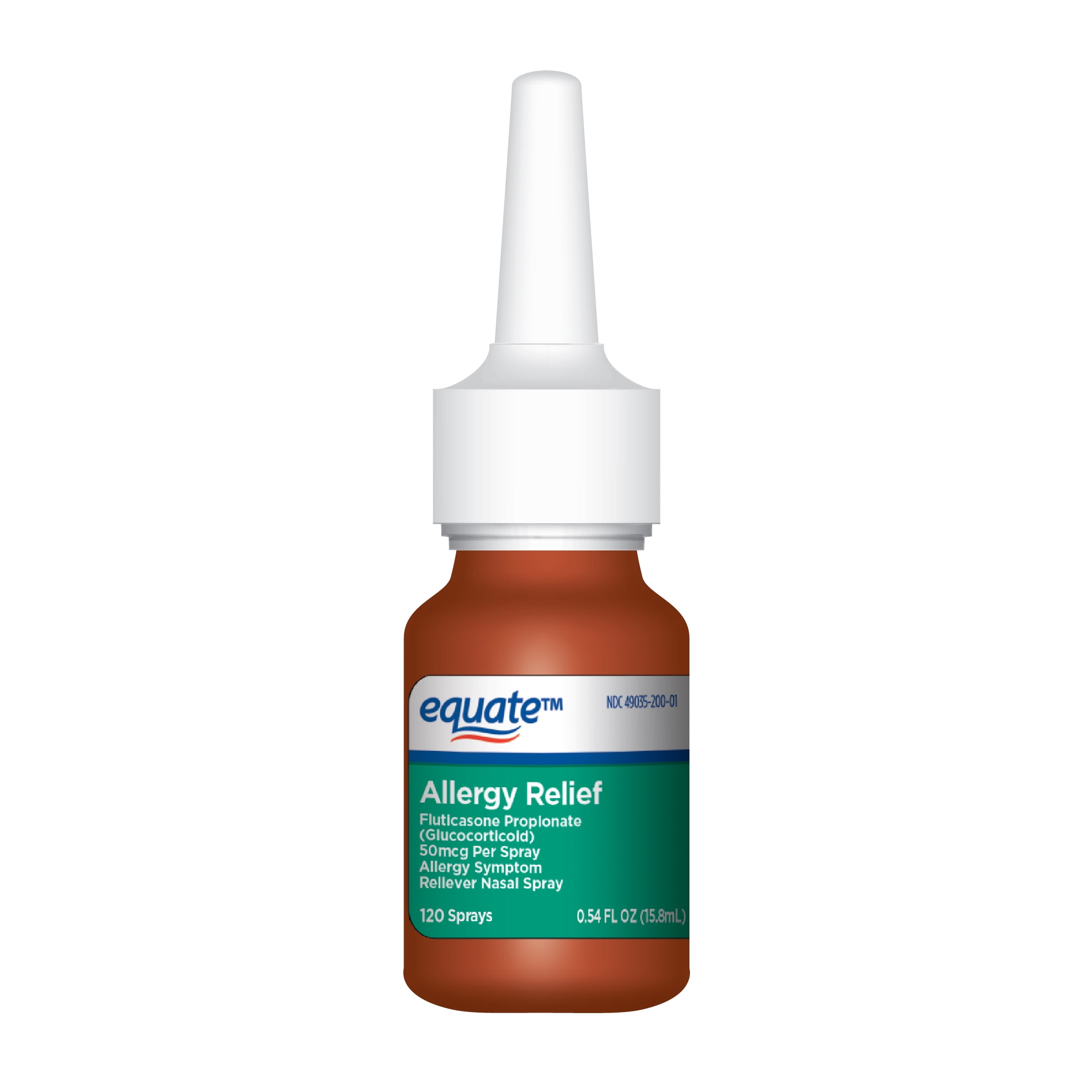
- Decongestant nasal sprays
- Corticosteroid nasal sprays
- Saline nasal sprays
- Antihistamine nasal sprays
How do decongestant nasal sprays work?
Decongestant nasal sprays (DNS) function by temporarily constricting blood vessels within the nasal passages, a process known as vasoconstriction. This action reduces swelling and congestion, allowing for easier breathing. Common active ingredients in DNS include oxymetazoline, pseudoephedrine, and phenylephrine, found in brands like Afrin, Dristan, Sinex, and Neo-Synephrine.
Advantages of Decongestant Nasal Sprays:
- Rapid relief from congestion, often within minutes
- Effective for short-term use
Disadvantages of Decongestant Nasal Sprays:
- Should not be used for more than 3-5 days
- Risk of rebound congestion (rhinitis medicamentosa) with prolonged use
Corticosteroid Nasal Sprays: The Go-To Solution for Allergy Relief
Corticosteroid nasal sprays are widely regarded as the most effective option for managing allergy symptoms. These sprays contain corticosteroids, a class of drugs that work to reduce inflammation in the nasal passages. While more severe cases may require prescription-strength formulations, over-the-counter (OTC) options are available and have shown significant efficacy in providing relief.

Popular Corticosteroid Nasal Spray Ingredients:
- Triamcinolone acetonide (brand name Nasacort)
- Fluticasone propionate (brand name Flonase)
What are the benefits of using corticosteroid nasal sprays?
Corticosteroid nasal sprays offer several advantages for allergy sufferers:
- Reduced inflammation in the nasal passages
- Decreased congestion and improved breathing
- Effective for long-term use throughout allergy season
Are there any drawbacks to using corticosteroid nasal sprays?
While generally safe and effective, corticosteroid nasal sprays do have some potential drawbacks:
- May take up to a week or more to achieve full effectiveness
- Require consistent, prolonged use for optimal results
- Possible side effects include nasal irritation and nosebleeds
Saline Nasal Sprays: A Simple Solution for Nasal Congestion
Saline nasal sprays offer a medication-free option for alleviating nasal congestion. These sprays contain a simple saline solution that helps to loosen mucus and debris within the nasal passages, facilitating easier breathing and removal of allergens.
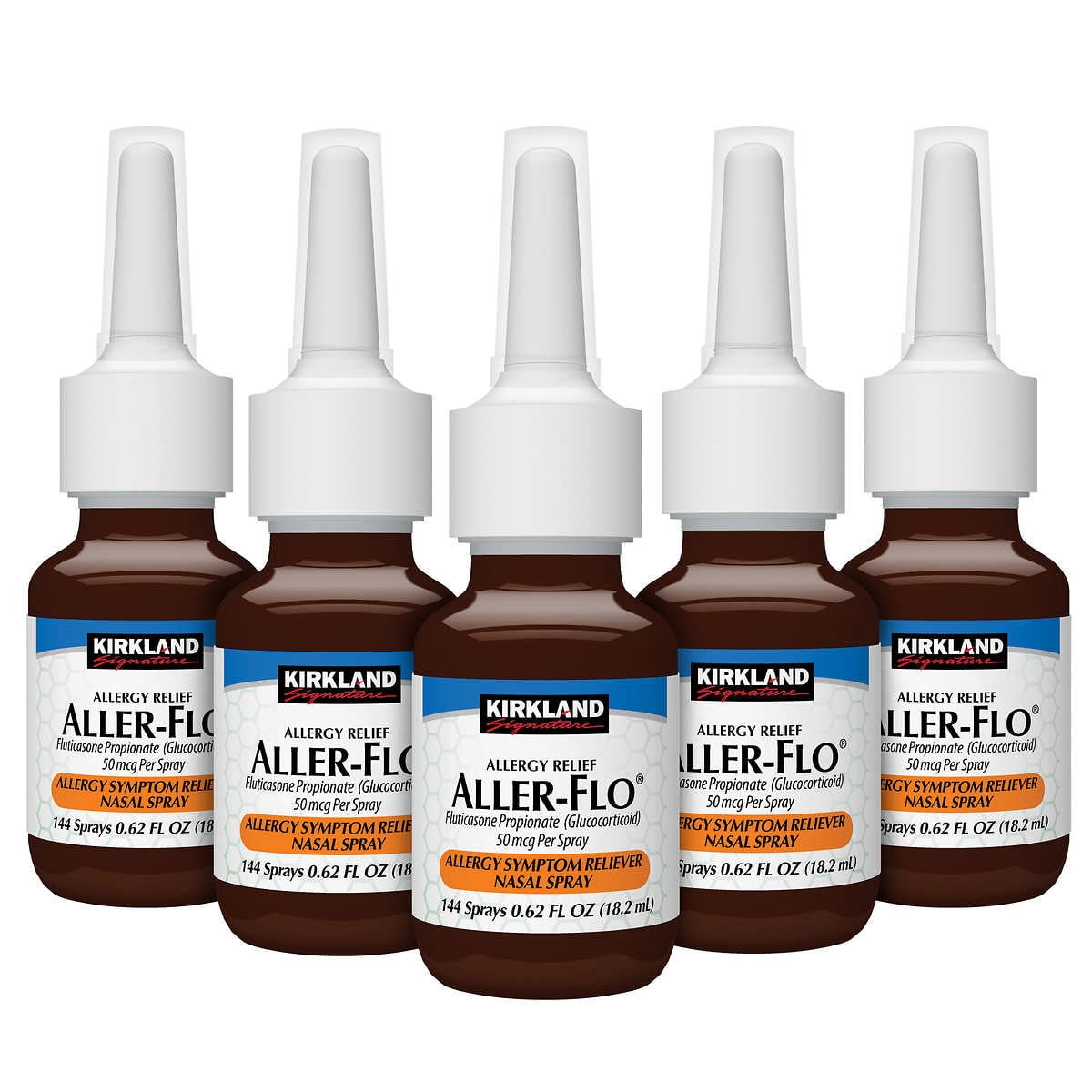
What are the advantages of using saline nasal sprays?
- Non-medicated and safe for frequent use
- Helps flush out allergens and irritants from the nasal passages
- Can be used in conjunction with other allergy treatments
- Suitable for all ages, including infants and pregnant women
Are there any limitations to saline nasal sprays?
While saline nasal sprays are generally safe and beneficial, they do have some limitations:
- Do not directly address inflammation or other allergy symptoms
- May not provide sufficient relief for moderate to severe allergies
- Require frequent application for optimal results
Antihistamine Nasal Sprays: Targeting the Source of Allergy Symptoms
Antihistamine nasal sprays work by blocking the effects of histamine, a chemical released by the immune system during an allergic reaction. By inhibiting histamine, these sprays can effectively reduce symptoms such as sneezing, itching, and nasal congestion.
Common Antihistamine Nasal Spray Ingredients:
- Azelastine (brand names Astepro and Astelin)
- Olopatadine (brand name Patanase)
How quickly do antihistamine nasal sprays work?
Antihistamine nasal sprays typically provide rapid relief, with many users experiencing improvement in symptoms within 30 minutes of application.

What are the potential drawbacks of antihistamine nasal sprays?
- Only available by prescription
- May cause drowsiness in some users
- Potential for local irritation at the application site
Choosing the Right Nasal Spray for Your Allergy Symptoms
Selecting the most appropriate nasal spray for your allergy symptoms depends on various factors, including the severity of your symptoms, any underlying health conditions, and your personal preferences. Consider the following when making your choice:
Factors to Consider When Selecting a Nasal Spray:
- Severity and duration of allergy symptoms
- Speed of onset required for symptom relief
- Potential side effects and drug interactions
- Cost and availability (OTC vs. prescription)
- Personal tolerance and response to different medications
It’s always advisable to consult with a healthcare provider before starting any new allergy treatment regimen. They can provide personalized recommendations based on your specific needs and medical history.

Proper Usage and Safety Considerations for Nasal Sprays
To maximize the effectiveness of nasal sprays and minimize potential side effects, it’s crucial to use them correctly. Follow these guidelines for safe and effective nasal spray use:
Tips for Proper Nasal Spray Application:
- Gently blow your nose to clear the nasal passages before use
- Shake the bottle well before each use (if required by the product)
- Tilt your head slightly forward and insert the nozzle into one nostril
- Aim the spray toward the outer wall of the nostril, away from the septum
- Inhale gently through your nose while spraying the medication
- Repeat the process in the other nostril if directed
- Avoid blowing your nose immediately after application
Are there any potential risks associated with nasal spray use?
While generally safe when used as directed, nasal sprays can pose some risks:
- Overuse of decongestant nasal sprays can lead to rebound congestion
- Prolonged use of corticosteroid sprays may increase the risk of nasal infections
- Some users may experience local irritation, nosebleeds, or headaches
- Certain nasal sprays may interact with other medications
Always follow the instructions provided with your nasal spray and consult your healthcare provider if you experience any persistent side effects or concerns.

Complementary Approaches to Allergy Management
While nasal sprays can be highly effective in managing allergy symptoms, a comprehensive approach to allergy relief often involves additional strategies. Consider incorporating these complementary methods to enhance your allergy management plan:
Additional Allergy Relief Strategies:
- Allergen avoidance: Identify and minimize exposure to your specific allergens
- Air purification: Use HEPA filters to reduce airborne allergens in your home
- Nasal irrigation: Regular use of a neti pot or saline rinse can help clear allergens from nasal passages
- Oral antihistamines: Combine with nasal sprays for comprehensive symptom relief
- Immunotherapy: Consider allergy shots or sublingual tablets for long-term allergy management
- Lifestyle modifications: Stay hydrated, get adequate sleep, and manage stress to support overall immune function
By combining nasal sprays with these additional strategies, you can create a more robust defense against allergy symptoms and improve your quality of life during allergy season.
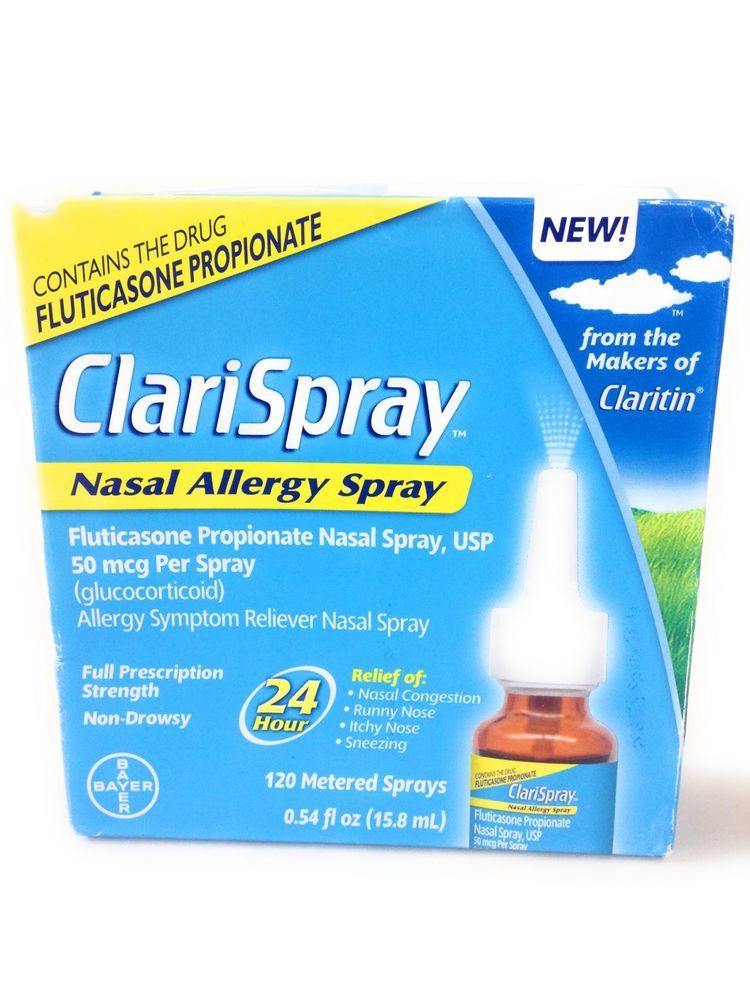
The Future of Nasal Spray Technology in Allergy Treatment
As research in allergy management continues to advance, new developments in nasal spray technology are emerging. These innovations promise to enhance the efficacy and user experience of nasal sprays for allergy relief:
Emerging Trends in Nasal Spray Technology:
- Smart nasal sprays with dose-tracking capabilities
- Combination sprays that incorporate multiple active ingredients
- Nanotechnology-enhanced formulations for improved drug delivery
- Longer-acting formulations requiring less frequent application
- Personalized nasal sprays tailored to individual allergy profiles
As these advancements continue to evolve, allergy sufferers can look forward to more effective, convenient, and personalized nasal spray options in the future.
Will new nasal spray technologies replace current options?
While innovative nasal spray technologies show promise, they are likely to complement rather than completely replace existing options. The diverse needs of allergy sufferers mean that a range of treatment options will continue to be valuable. As always, it’s essential to stay informed about new developments and consult with healthcare providers to determine the most appropriate treatment plan for your specific allergy symptoms.
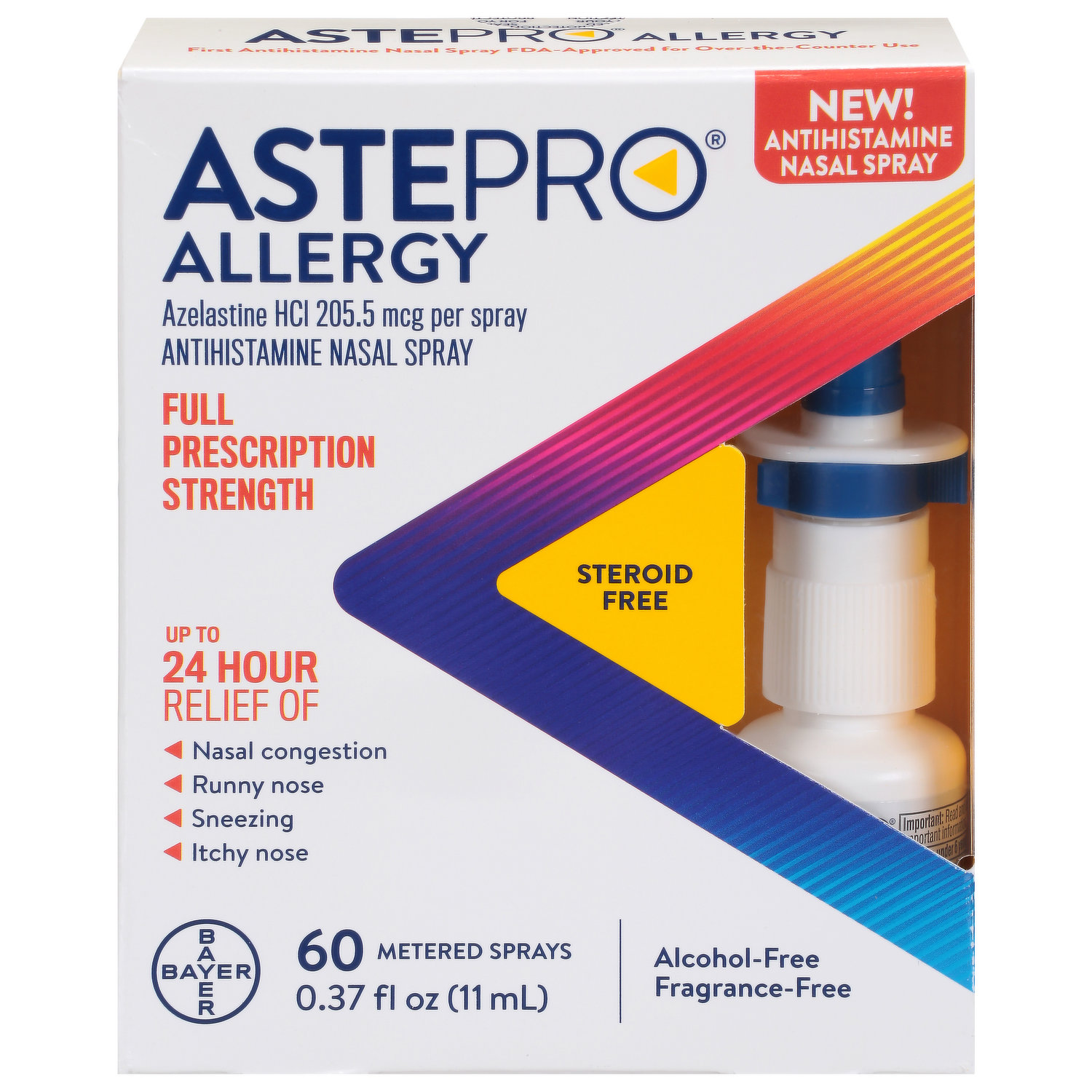
How Do Nasal Sprays Relieve Allergies?
- What are nasal sprays?
- How do nasal sprays relieve allergies?
See more
If you have any medical questions or concerns, please talk to your healthcare provider. The articles on Health Guide are underpinned by peer-reviewed research and information drawn from medical societies and governmental agencies. However, they are not a substitute for professional medical advice, diagnosis, or treatment.
Breathing through your nose is a no-brainer until your allergies make it nearly impossible. You can wait it out and be miserable, or you can try to get allergy relief with a nasal spray. But which type of nasal spray should you pick? Let’s break down the different nasal spray options to help you find the best option to relieve your nasal allergy symptoms.
Nasal sprays are medications used to treat nasal symptoms such as inflammation, congestion, and runny nose. In many cases, these symptoms are caused by seasonal allergies, also known as allergic rhinitis or hay fever.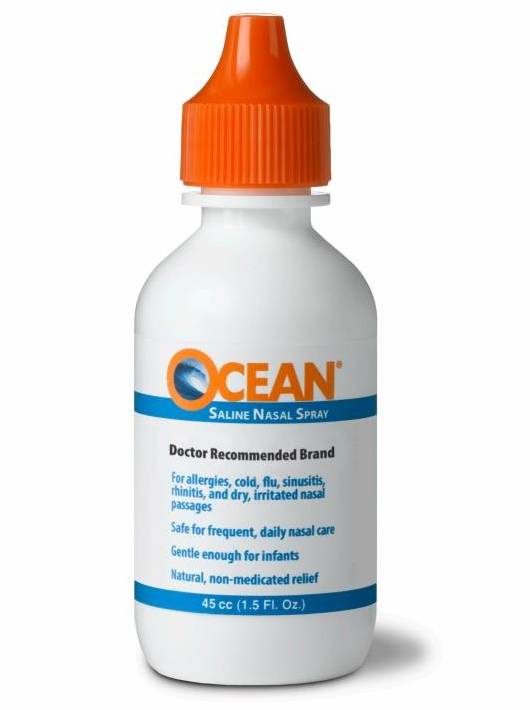 But unlike many types of allergy medications taken orally, nasal sprays are sprayed directly in the nasal passages via a spray bottle or pressurized canister.
But unlike many types of allergy medications taken orally, nasal sprays are sprayed directly in the nasal passages via a spray bottle or pressurized canister.
Nasal spray: separating fact and fiction
There are four main types of medicated nasal sprays sold via prescription or over-the-counter (OTC):
- Decongestant
- Steroid
- Saline
- Antihistamine
Exactly how each nasal spray works differs depending on its active ingredient—and each has its own set of advantages and disadvantages for treating allergies.
Decongestant nasal sprays (DNS) relieve your stuffy nose by temporarily shrinking the blood vessels inside the nose (known as vasoconstriction). Examples include oxymetazoline, pseudoephedrine, and phenylephrine. These ingredients are found in brands like Afrin, Dristan, Sinex, and Neo-Synephrine (Wahid, 2021).
- Advantages: These sprays work fast, alleviating congestion within minutes.
- Disadvantages: Decongestant nasal sprays should NOT be used for more than 3–5 days.
 Prolonged use can be dangerous and can cause rebound congestion or rhinitis medicamentosa. Rebound congestion is increased congestion that results from the overuse of nasal decongestant sprays (Wahid, 2021).
Prolonged use can be dangerous and can cause rebound congestion or rhinitis medicamentosa. Rebound congestion is increased congestion that results from the overuse of nasal decongestant sprays (Wahid, 2021).
Corticosteroid nasal sprays are typically the go-to for relieving allergy symptoms. They contain corticosteroids, a class of drugs that works to reduce inflammation. More severe allergy symptoms may require a prescription-strength nasal spray. However, over-the-counter (OTC) nose sprays with active ingredients such as triamcinolone acetonide (brand name Nasacort) or fluticasone propionate (brand name Flonase) are also shown to help provide relief (Akhouri, 2021).
- Advantages: By reducing inflammation, the sinuses can feel less congested, making it easier to breathe.
- Disadvantages: Though you may experience some relief early on, steroid nasal sprays are most effective after prolonged, consistent use. It can take a full week or more to feel the full effects, meaning you may have to deal with the symptoms for several days or take other medications to get immediate relief.
 For best results, use a steroid nasal spray throughout the duration of allergy season. Side effects include irritation and nosebleeds (Akhouri, 2021).
For best results, use a steroid nasal spray throughout the duration of allergy season. Side effects include irritation and nosebleeds (Akhouri, 2021).
Saline nasal sprays are the simplest type of nasal spray for allergies because they aren’t a medication. They contain a saline solution to help loosen mucus and debris inside the nose to clear congestion and blockages.
- Advantages: It’s simple to carry around and use and may help flush out mucus, allergens, and other debris from the sinus cavities.
- Disadvantages: Saline is not a medication, so other than its cleaning effect, it will not reduce other symptoms of allergies like inflammation and itching.
How to get rid of allergies: 7 helpful remedies
Histamine is a chemical produced by the immune system that works to rid the body of foreign invaders. During an allergic reaction, histamine is released in response to allergens like pet dander, dust mites, and mold. The result is unwanted symptoms like sneezing, itching, and nasal congestion.
The result is unwanted symptoms like sneezing, itching, and nasal congestion.
Antihistamine nasal sprays work by blocking the effects of histamine. Examples include azelastine (brand names Astepro and Astelin) and olopatadine (brand name Patanase).
- Advantages: Antihistamine nasal sprays work quickly—often within 30 minutes (UpToDate, n.d.).
- Disadvantages: This type of nasal spray is only available via prescription. It may also cause drowsiness.
Nasal sprays can be an effective way to get relief from congestion and other symptoms that accompany allergies, but it’s not a one-size-fits-all solution. It’s best to speak to a healthcare provider about the right option for allergy relief—both in the short and long term.
Nasal sprays work by delivering the medication directly to the inside of your nose. Follow the individual medication instructions regarding how often to use it—if possible, take medicine at the same time each day. To properly use nasal sprays, follow these steps:
To properly use nasal sprays, follow these steps:
- Blow your nose to clear it before each use.
- Before first use, prime the bottle by pumping five times until a mist appears. Also, do this step if it has been three or more days since you last used the medication.
- Shake the bottle gently.
- Keep your head upright, or tilt it slightly forward, and insert the applicator tip into your nostril.
- Hold the applicator tip inside your nose and point the tip toward the outside corner of your eye. The goal is NOT to spray the medication straight back. You also should avoid pointing the tip towards the center of the nose (where the septum is), as this increases your risk of nosebleeds.
- Close off the other nostril with a finger. Breathe in, and as you are inhaling, press the pump to release the spray into the nostril.
- Hold your breath for a few seconds, and then slowly breathe out through your mouth after each spray.
- Alternate nostrils after each pump (e.
 g. right-left-right-left).
g. right-left-right-left). - After using the spray, gently sniff.
- Wipe the tip of the applicator with a clean tissue after each use.
See more
Nasal Sprays for Allergies
When allergies strike, nasal sprays can help. There are many different types, and most work faster than pills.
You can buy them at the drugstore, or your doctor can prescribe one to relieve a stuffy or runny nose.
Decongestant Sprays
Decongestant sprays shrink swollen blood vessels and tissues in your nose that cause congestion. Oxymetazoline hydrochloride (Afrin, Dristan, Sinex) and phenylephrine hydrochloride (Neo-Synephrine) are some examples of these medicines. You can buy them over the counter.
Don’t use decongestant nasal sprays longer than three days. Using them longer can actually make your nose more stopped up. Ask your doctor before using them if you have glaucoma or high blood pressure that’s not under control.
Antihistamine Sprays
Antihistamine sprays relieve congestion, itchy and runny nose, and sneezing. They are available by prescription and include azelastine (Astelin, Astepro) and olopatadine (Patanase). They usually cause less drowsiness than antihistamine pills, but they still may make some people sleepy.
They are available by prescription and include azelastine (Astelin, Astepro) and olopatadine (Patanase). They usually cause less drowsiness than antihistamine pills, but they still may make some people sleepy.
Steroid Nasal Sprays
These sprays work very well to reduce congestion, sneezing, and itchy, watery eyes. They also help stop a drippy nose. They’re often the first drug recommended for allergies, but it takes about a week before you’ll notice your symptoms getting better.
Examples of steroid nasal sprays available by prescription include beclomethasone (Beconase, Qnasl), ciclesonide (Zetonna), fluticasone furoate (Veramyst), and mometasone (Nasonex). Three medications can be purchased over the counter — budesonide (Rhinocort Allergy), fluticasone (Flonase Allergy Relief), and triamcinolone (Nasacort Allergy 24HR).
Side effects can include headache, sore throat, nosebleed, or cough.
Cromolyn Sodium (NasalCrom)
This nasal spray prevents your body from releasing histamines, chemicals that cause allergy symptoms like runny nose and sneezing.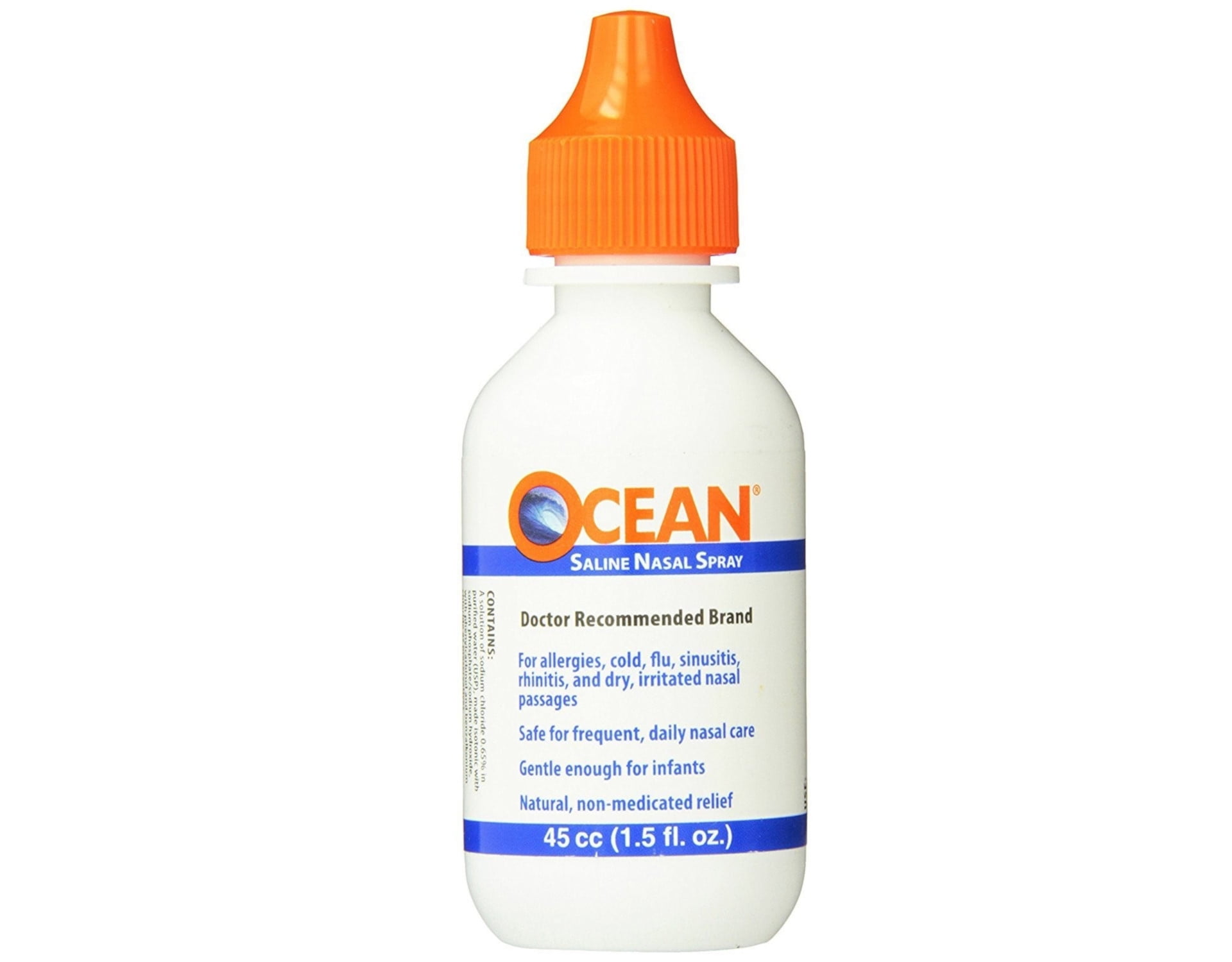 It can also help a stuffy nose. Some people see results in only 30 minutes. For it to work best, you need to start using it one to two weeks before allergy season starts and then use it one or more times every day. It doesn’t work as well as steroid nasal sprays.
It can also help a stuffy nose. Some people see results in only 30 minutes. For it to work best, you need to start using it one to two weeks before allergy season starts and then use it one or more times every day. It doesn’t work as well as steroid nasal sprays.
You can buy NasalCrom as a nasal spray at the drugstore.
Cromolyn sodium is safe for most people. Ask your doctor before using it if you have wheezing from asthma or sinus pain. Side effects can include sneezing and nasal burning.
Ipratropium Nasal (Atrovent Nasal)
This prescription nasal spray treats a runny nose by stopping the production of mucus. It doesn’t relieve congestion or sneezing very well.
If you have glaucoma or an enlarged prostate, you may not be able to use Atrovent. Side effects can include headache, nosebleeds, sore throat, or nasal irritation.
Steroid nasal sprays – NHS
Steroid nasal sprays, also called corticosteroid nasal sprays, are anti-inflammatory medicines that you spray into your nose.
They can be used to treat a range of conditions, including hay fever, sinusitis, non-allergic rhinitis and nasal polyps.
Some steroid nasal sprays are available to buy from pharmacies and shops, while others are only available on prescription. Steroid nasal drops are also available.
Common examples of steorid nasal sprays include:
- beclometasone
- budesonide
- fluticasone
- mometasone
How and when to use steroid nasal sprays
Steroid nasal sprays can be used as a long-term treatment or just when they’re needed.
For hay fever, it’s best to use them from 1 to 2 weeks before you think your symptoms will start, as they can take a few days to work.
The leaflet that comes with your spray should explain how to use it and how often. Ask a pharmacist or doctor if you’re not sure.
It’s important to use your spray regularly, even if you’re feeling better. It will only help if it’s used every day.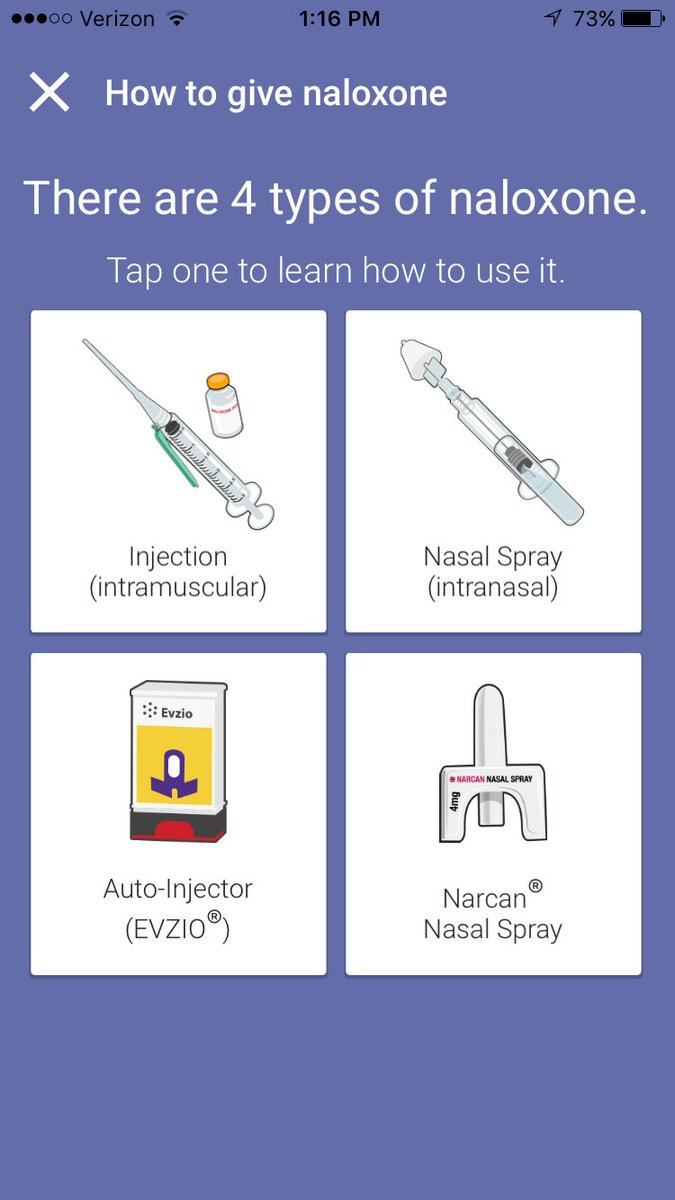
If you miss a dose or take too much
If you forget to take a dose, take it as soon as you remember. If it’s nearly time for your next dose, skip the one you missed.
Do not take a double dose to make up for a forgotten dose.
Accidentally using too much steroid nasal spray is unlikely to be harmful if it’s a one-off. Speak to a pharmacist or doctor if you’re worried.
Using a steroid nasal spray too much over a long period can increase your risk of getting side effects.
Stopping treatment
If you’ve bought a steroid nasal spray from a pharmacy or shop, stop using it when you think you no longer need it. Do not use it continuously for more than a month without speaking to a doctor.
If you’re taking a prescription spray, do not stop using it unless the doctor advises you to do so. You may need to reduce your dose gradually.
This can help avoid unpleasant side effects (withdrawal symptoms), such as severe tiredness, joint pain, being sick and dizziness.
Side effects of steroid nasal sprays
Steroid nasal sprays do not usually cause any significant side effects if used correctly and at normal doses.
Side effects can include:
- a stinging or burning sensation in the nose
- dryness and crustiness in the nose
- a dry, irritated throat
- an unpleasant taste in the mouth
- itchiness, redness and swelling in the nose
- nosebleeds
If you’re taking a high dose for a long time, there’s also a small chance you could get some of the side effects of steroid tablets, such as increased appetite, mood changes and difficulty sleeping.
You can report any suspected side effect to the Yellow Card Scheme.
Using steroid nasal sprays with other medicines, food or alcohol
Some medicines can interfere with the way steroid nasal sprays work, although this is uncommon.
Check the leaflet that comes with your spray to see if it could be affected by other medicines. Ask a pharmacist or doctor if you’re unsure.
You can usually drink alcohol while using a steroid nasal spray and you do not normally need to avoid any particular foods.
Who can use steroid nasal sprays
Most people can use steroid nasal sprays.
Ask a pharmacist or doctor for advice before using one if you:
- have had an allergic reaction to steroids in the past
- have recently had surgery on your nose
- have tuberculosis (TB) or an infection in your nose
- are having, or have recently had, treatment with steroid tablets or steroid injections into your blood
- are looking for a nasal spray for your child (some nasal sprays are not suitable for children)
- are pregnant, breastfeeding or trying for a baby
Steroid nasal sprays are normally safe to use while breastfeeding and during pregnancy, but it’s a good idea to get medical advice first.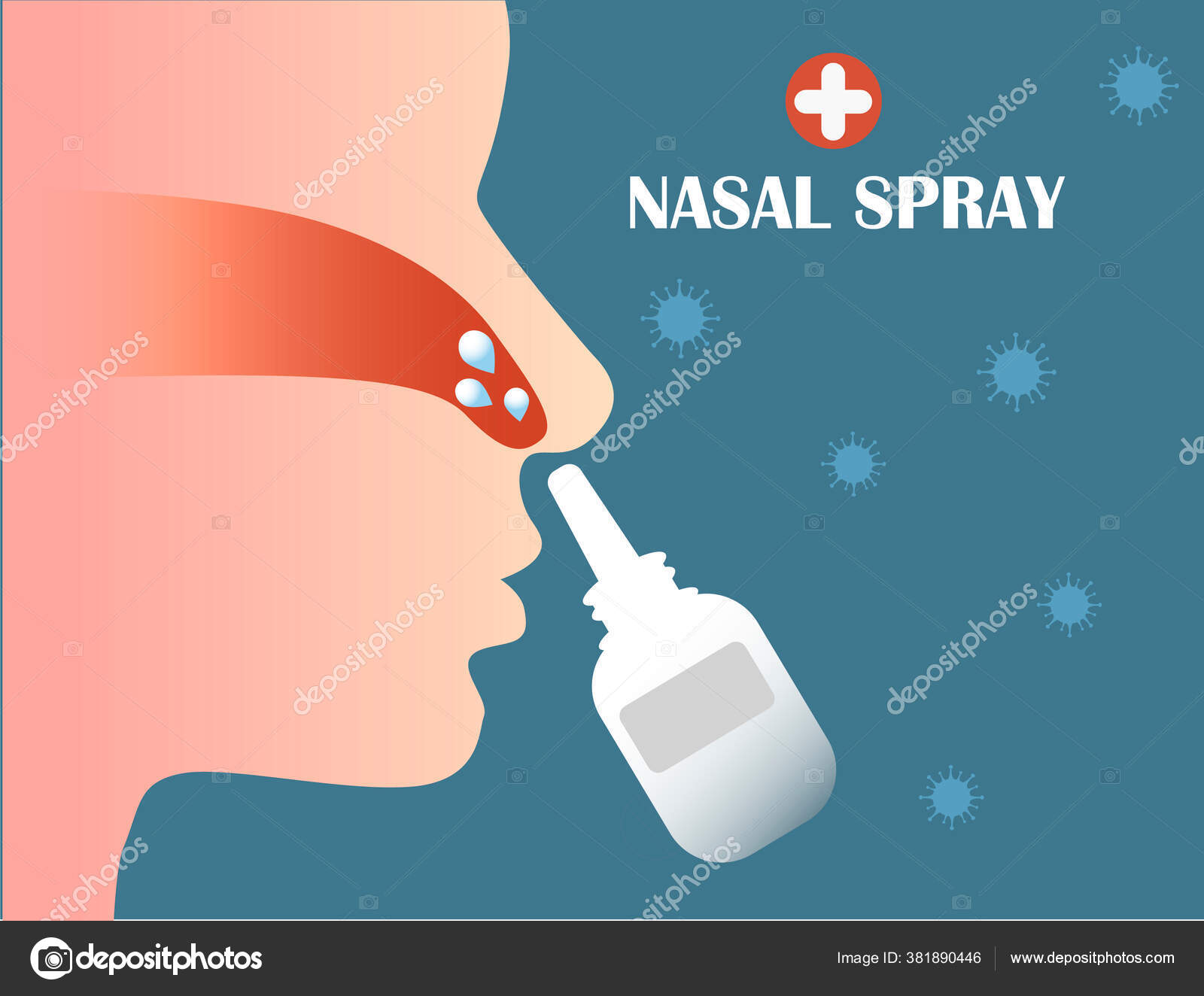
How steroid nasal sprays work
Steroids are a man-made version of hormones normally produced by the adrenal glands, which are 2 small glands above the kidneys.
When sprayed into the nose, steroids reduce inflammation (swelling).
This can help relieve symptoms such as sneezing and a runny or blocked nose. It can also help to reduce the size of any swellings (such as polyps in your nose.
Steroid nasal sprays are not the same as anabolic steroids, which are often used illegally by some people to increase their muscle mass.
Page last reviewed: 15 January 2020
Next review due: 15 January 2023
What to Know About Using a Nasal Spray
Nasal sprays are used to deliver medications into your nostrils. Most often, they are used to treat allergy or cold symptoms, such as itching, sneezing, or nasal congestion. Some nasal sprays, however, deliver medications that act elsewhere in the body.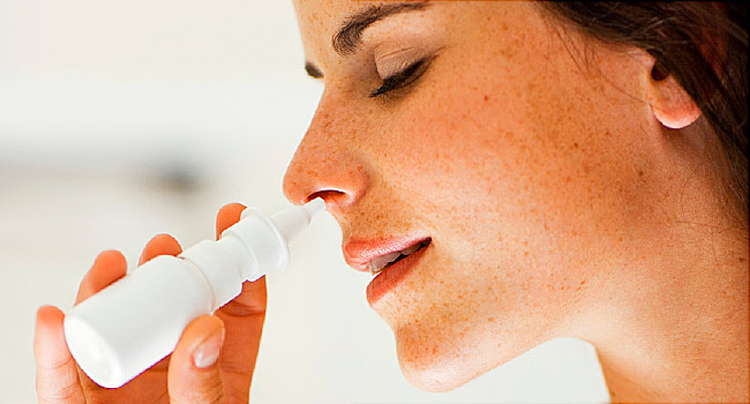 The lining of your nose is rich in blood vessels, which means it can easily absorb medications into your bloodstream.
The lining of your nose is rich in blood vessels, which means it can easily absorb medications into your bloodstream.
Nasal sprays are available by prescription and over the counter (OTC), depending on the medication. Most work by introducing a fine mist of the medication into your nostrils by the action of a hand-operated pump bottle or squeeze bottle.
Ellen Lindner / Verywell
Types of Nasal Sprays
There is a wide array of over-the-counter and prescription nasal sprays on the market. Some treat nasal congestion and allergies, while others deliver systemic medications and vaccines to manage or prevent illness.
The first step in using a nasal spray correctly is making sure that you are using it for the right reasons.
OTC Cold and Allergy Nasal Sprays
- Afrin (oxymetazolone): Acts as a decongestant to relieve nasal congestion in people with colds and sinus problems
- Nasalcrom (cromolyn): Helps to relieve and prevent symptoms of allergic rhinitis such as sneezing, runny nose, or itching
- Neo-Synephrine (phenylephrine): Acts as a decongestant to relieve nasal congestion in people with colds and sinus problems
- Flonase (fluticasone propionate): Treats sneezing and symptoms of hay fever
- Nasacort (triamcinolone): Treats itchy and runny nose
- Rhinocort (budesonide): Steroid that prevents inflammation, and treats runny and itchy nose
Prescription Allergy Nasal Sprays
- Astelin NS/Astepro (azelastine): A steroid-free antihistamine that reduces nasal allergy symptoms, such as a runny nose, hay fever, or other allergies (available OTC in the U.
 S. in early 2022 for adults and children 6 and older)
S. in early 2022 for adults and children 6 and older) - Nasarel (flunisolide): Helps to shrink nasal polyps and relieve allergy symptoms, such as a runny or stuffy nose, sneezing, and itching of the nose
- Nasonex (mometasone): Used to prevent and treat stuffy nose and other allergy symptoms
- QNASL (beclomethasone): Used to treat allergy symptoms, such as sneezing
- Zetonna/Omnaris (ciclesonide): Used to treat itchy and runny nose, as well as sneezing
- Xhance (fluticasone): Can be prescribed to treat nasal polyps, as well as allergy symptoms
- Dymista (fluticasone/azelastine combination): Treats allergy symptoms, such as runny and itchy nose.
- Patanase (olopatadine): Used to treat allergy symptoms, such as itchy nose and eyes
Other Nasal Sprays
- Fortical (calcitonin): Used to treat osteoporosis, it controls the amount of calcium in your body and helps maintain proper bone density
- Imitrex (sumatriptan): Helps to relieve a migraine attack that starts with or without an aura
- Nicotine nasal sprays: A smoking-cessation device used to wean you off cigarettes
FluMist is the intranasal influenza vaccine. It must be administered by a healthcare professional.
It must be administered by a healthcare professional.
Basics of Nasal Spray Use
Many different medications come as nasal sprays, and instructions for how to use them can vary. If you don’t understand the instructions for the particular product you’re using, ask your pharmacist to walk you through them.
Before starting:
- Make sure you can breathe through each nostril. If your nostril is blocked, the medication won’t go deep enough into the nasal passage to be effective.
- Know that some nasal sprays need to be primed each day before use. To do so, squirt it a few times into the air until a fine mist comes out. Make sure to keep it away from your eyes and others.
- Store your nasal spray as directed and keep the bottle away from direct sunlight. Don’t share your nasal spray with other people and, most importantly, keep it where children can’t get to it.
When you’re ready to use the spray, remember to sniff gently as if smelling your favorite food or a flower.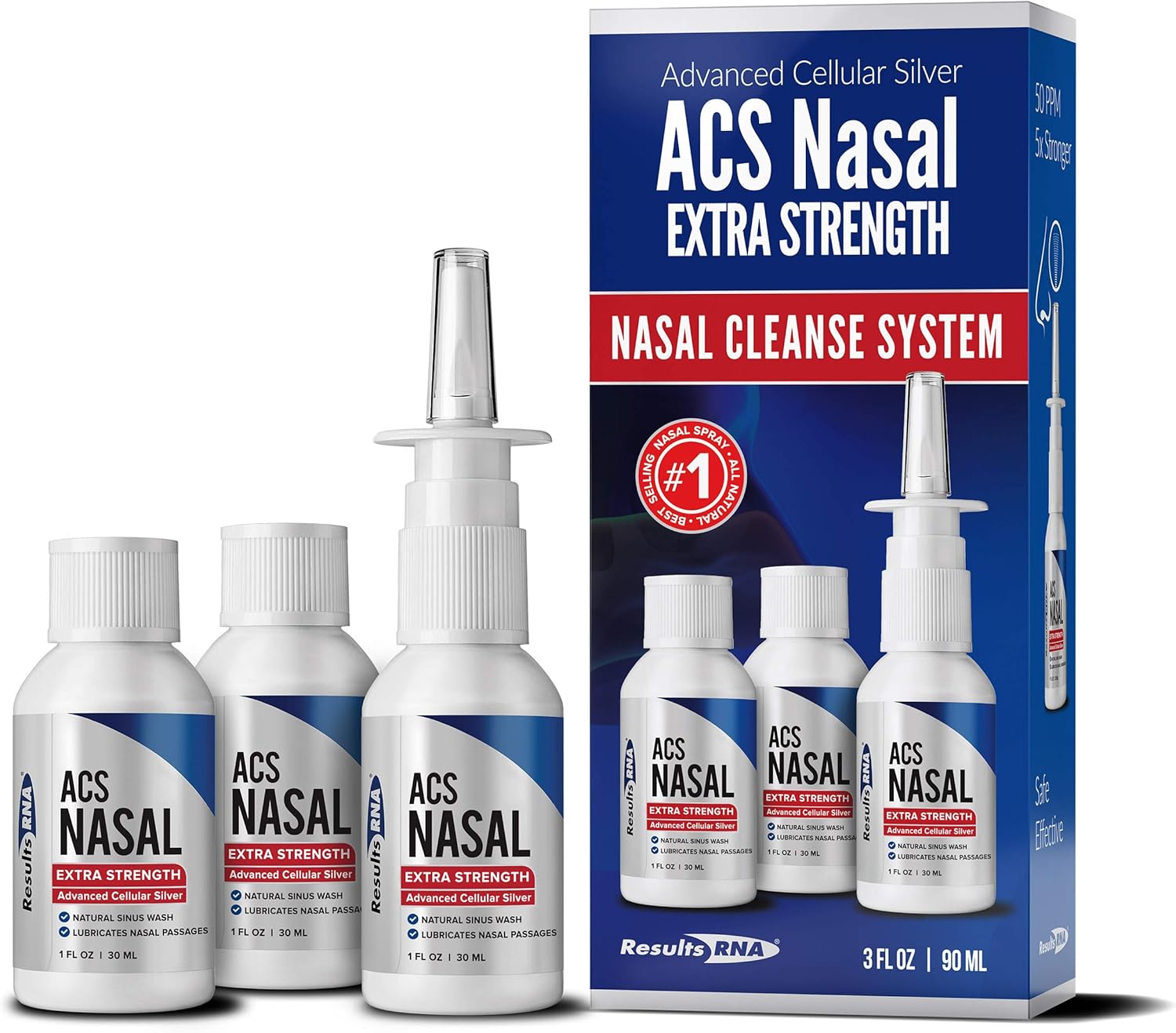 Do not snort the spray, which can cause the medication to bypass your nasal passage and go straight into your throat.
Do not snort the spray, which can cause the medication to bypass your nasal passage and go straight into your throat.
Step-by-Step Instructions
To use a pump-bottle nasal spray correctly:
- Blow your nose gently to remove mucus from your nasal passages.
- Wash your hands with soap and water.
- Gently shake the bottle of nasal spray and remove the cap. If needed, prime the dispenser before using it.
- Tilt your head slightly forward and close one nostril by gently pressing against the side of your nose with your finger.
- Insert the tip of the nasal spray into the other nostril. Point the tip toward the back and outer side of your nose. Make sure to direct the spray straight back, not up into the tip of your nose.
- Squeeze the nasal spray bottle as you slowly breathe in through your nose.
- Remove the tip of the nasal spray from your nostril and breathe out through your mouth.
- Repeat this procedure for your other nostril (if advised).
 Make sure to follow the directions and use only the recommended amount of medication.
Make sure to follow the directions and use only the recommended amount of medication. - Wipe the tip of the nasal spray with a tissue or alcohol pad and put the cap back on.
- Try to avoid sneezing or blowing your nose immediately after using the nasal spray.
If you’re using your nasal spray correctly, the medication should not drip from your nose or down the back of your throat.
Some nasal sprays leave an unpleasant taste in your mouth. A drink of water or juice should help eliminate the aftertaste.
Never use your nasal spray after the expiration date on the bottle. Liquid medication can easily be contaminated with dirt or bacteria.
Side Effects
Nasal sprays can cause side effects. Some common ones include:
- Burning
- Bleeding
- Stinging
- Increased runny nose
- Dryness in the nose
- Sneezing
- Nervousness
- Nausea
- Headache
If any side effects are persistent or severe, let your doctor know. Also contact your healthcare provider if you experience any of the following more significant side effects:
Also contact your healthcare provider if you experience any of the following more significant side effects:
- Dizziness
- Insomnia
- Tremors
- Vision changes
- Weakness
- Shortness of breath
- Irregular or rapid heartbeat
Rebound Congestion
Vasoconstriction is the narrowing of blood vessels in the nose, which is what helps decrease congestion and fluid release. It is what makes vasoconstrictive nasal sprays, such as Afrin and neosynephrine, beneficial.
With regular use of such sprays over time, however, you’ll need increasing dosages to relieve your stuffiness. The overuse of such sprays decreases their effectiveness and can actually make nasal obstruction worse—what’s known as rhinitis medicamentosa, or rebound congestion.
As a rule, never use a decongestant nasal spray for longer than three days. Overuse can lead to dependence and require you to use a metered-dose device called a Rhinostat to gradually wean you off the medication.
An overview of nasal rinses and sprays
When sinus conditions occur, there are different topical treatments, or therapies that can be applied directly to the affected area of the nose. Some of the most common are corticosteroid nasal sprays, saline nasal sprays, and nasal rinses.
Corticosteroid sprays
Medicated corticosteroid nasal sprays, such as Flonase®, Afrin® and RHINOCORT®, can be purchased over-the-counter or with a doctor’s prescription. Prescription sprays are usually stronger or contain more active ingredients than the over-the-counter sprays. When the applicator is activated, the mist settles on the mucus membrane inside the nose and sinuses. The chemicals mimic the body’s natural hormones which help to fight inflammation. When the sinus tissue is inflamed and causing blockage, steroids can help reduce swelling, enabling the patient to breathe better.[1]
Saline spray
Saline sprays can come in similar-looking bottles as corticosteroid sprays. However, saline sprays do not include corticosteroids. It does not have any medicated ingredients. In fact, it only contains saltwater. Washing the nasal passageways out with water is a common practice and is used to treat disorders of the nose.[2] Saline nasal sprays are an application of this technique.
However, saline sprays do not include corticosteroids. It does not have any medicated ingredients. In fact, it only contains saltwater. Washing the nasal passageways out with water is a common practice and is used to treat disorders of the nose.[2] Saline nasal sprays are an application of this technique.
Saline nasal sprays usually get into the nose just fine, but because only a small amount of saline is expelled, it may not reach all the way into the sinuses. This is a drawback of all sinus irrigation methods, but methods that use higher volumes of water may be more effective at rinsing deeper inside the sinus cavities.[2] Still, saline sprays have some effect in re-hydrating and rinsing the nostrils.[3]
Nasal rinses
The American Rhinologic Society points out that when a nasal rinse method delivers more water, it also stands a better chance of penetrating deep into the network of sinuses.[2]
Nasal rinsing involves pouring saltwater through one nostril and letting it drain the sinuses and exit the other nostril.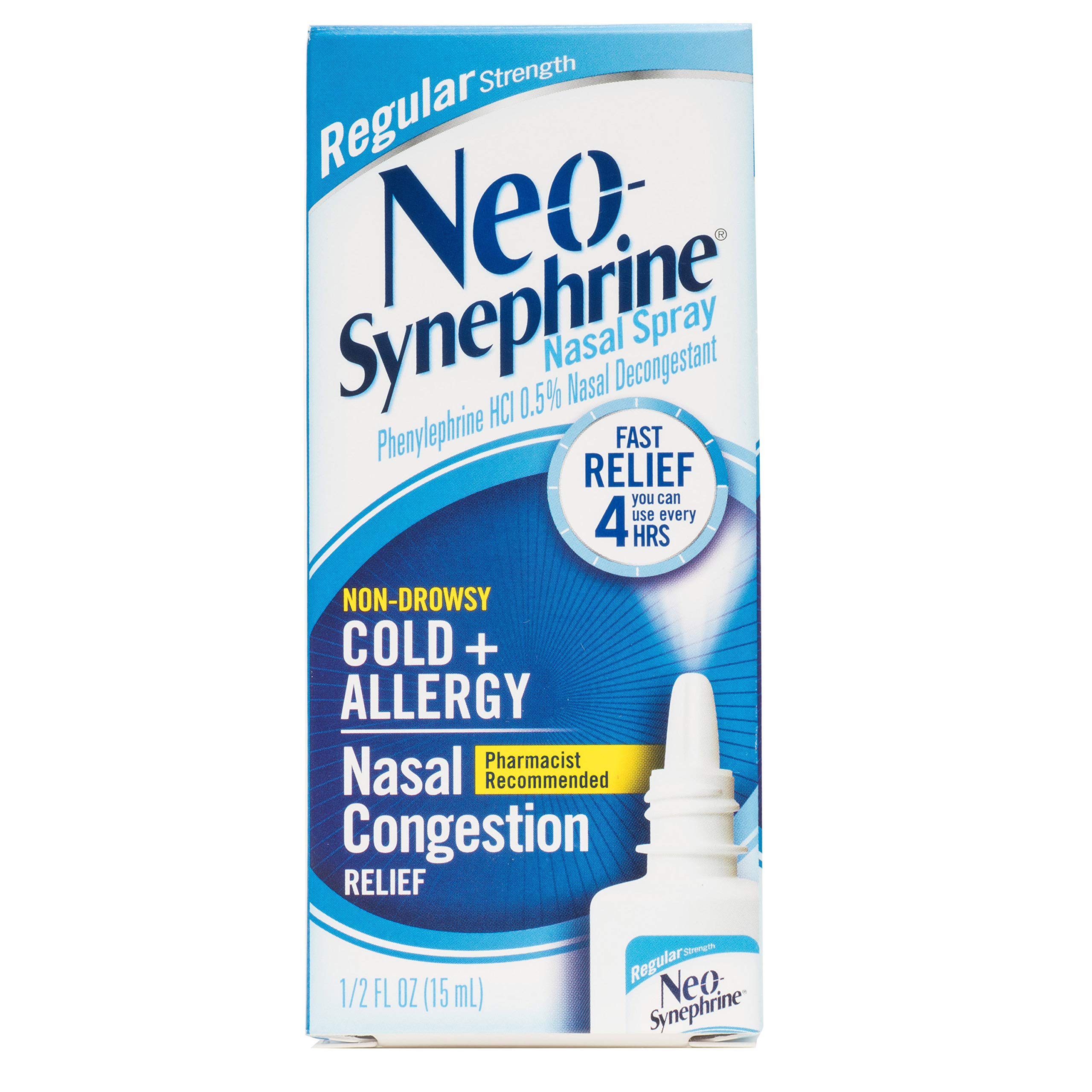 Most people will lean over the sink or rinse in the shower for convenience.
Most people will lean over the sink or rinse in the shower for convenience.
Several variations of sinus rinse devices are available without a prescription. They may be referred to as “Sinus Rinse”, “Neti Pot”, “Sinus Irrigation” or “Nasal Lavage” among other names. The delivery device is something that resembles either a small plastic teapot or a squeezable nasal rinse bottle.
For those who don’t need the convenience of purchasing the store bought pre-mixed saline packets, the American Academy of Allergy Asthma and Immunology (AAAAI) website provides a make-at-home recipe[4], along with guidelines for use and precautions to follow.
The American Rhinologic Society states that while rinses help to clear the nose of mucus, they may also help to reduce inflammation. This may result from helping the nose to remove small particles, bacteria, and viruses which can cause allergy and inflammation.[2]
The AAAAI advises patients that a doctor with specialized training and experience can accurately diagnose conditions and suggest helpful treatments. [4]
[4]
Decongestant sprays
Over-the-counter decongestant nasal sprays, like Afrin®, can shrink blood vessels and tissues and decrease mucus production. They can be used temporarily to relieve short-term congestion symptoms. The inflammation-reducing effect of the spray typically lasts a few hours, after which the mucous membranes begin to swell again.
The recurrence of swelling may become stronger if the decongestant nasal spray is used continuously for more than a few days. Physicians may refer to this as “the rebound effect.” Therefore, this treatment is not intended for long-term use.[5]
Which methods are right for you?
Even though these methods seem to have many similarities, it is important to understand the differences. Saline and corticosteroid sprays are not the same thing—even though they come in similar looking bottles. Corticosteroid sprays are medicated, while saline sprays are not. Nasal rinsing is similar to saline spray, but it rinses the nasal passages with more water than a spray. As such, it may be more effective in clearing mucus, flushing the sinuses, and helping address sinus symptoms. Before you attempt to treat your sinus condition with any of these methods, it is important that you consult a doctor to determine what’s best for you.
As such, it may be more effective in clearing mucus, flushing the sinuses, and helping address sinus symptoms. Before you attempt to treat your sinus condition with any of these methods, it is important that you consult a doctor to determine what’s best for you.
Afrin is a registered trademark of Bayer. Flonase is a registered trademark of GSK. RHINOCORT is a registered trademark of AstraZeneca.
Do Nasal Sprays Work for Snoring?
Nasal sprays can be effective for snoring if you get the right type.
Snoring is often the result of a blocked or stuffy nose. Unblocking your nose can drastically reduce snoring, and a popular method is to use a nasal spray.
Not all nasal sprays are the same, and it’s important to match the appropriate type of nasal spray to your cause of nasal blockage.
Read more about the various causes of a blocked nose that can lead to snoring
In this guide, we’ll go through the different types of nasal spray available to give you the best chance of finding one that works for you.
What’s blocking your nose and why does it make you snore?
If you breathe through a partially blocked nose, suction forces are created that can cause your throat to collapse and make your uvula and soft palate vibrate [1].
When your nose is fully blocked, you’ll start breathing through your mouth when you sleep – a common cause of snoring.
Find out why open mouth breathing is a leading cause of snoring
There are lots of causes of a stuffy nose, from colds and infections, hay fever and dust allergies to chronic nasal inflammation and non-allergic rhinitis. One type of nasal spray won’t cure all types of nasal blockage, so it’s important to know which one is which …
Different types of nasal spray
1. Antihistamine nasal sprays
In short, these are ideal for treating nasal blockage that arises due to allergy.
If your snoring is worse in the spring and summer when pollen spores cause hay fever, or if you’ve noticed dust in the home makes you stuffy and snore, then antihistamine sprays could work for you.
An allergy is when your body elicits an immune response – an infection-fighting tactic – to something non-infectious.
Histamine is a chemical inside the body that is released in high quantities in this immune response. Histamine and other chemicals rush to the site where allergens are detected (usually the nose and throat as this is the primary point of entry if breathing them in) and then bind to specific receptors to cause inflammation.
Antihistamines help to relieve your stuffy nose by reducing this inflammation via stopping histamine binding to other cells.
Summary: good for allergy sufferers, treats inflammation and runny nose, use when symptoms worsen.
Examples: azelastine, olopatadine
2. Steroid nasal sprays
Like antihistamines, these work by reducing inflammation. They can be suitable for treating allergies and non-allergic rhinitis or nasal polyps. Steroid nasal sprays are commonly prescribed to treat problematic snoring but can also be bought over-the-counter.
The steroids in these nasal sprays are not to be confused with anabolic steroids used to build body mass. Nasal spray steroids are copies of naturally occurring hormones produced by glands above the kidneys.
Steroid nasal sprays reduce inflammation via several different mechanisms [2]. This includes stopping the function of a key enzyme which helps produce inflammatory chemicals in the body [3].
If prescribed steroid nasal sprays, remember that they are unlikely to provide instant relief and usually work after a few initial uses. If your nasal problems are chronic, you should use the spray regularly even if your symptoms improve.
Steroid nasal sprays don’t tend to produce any serious side effects and can be used by most people.
Summary: good general nasal spray for a variety of conditions, especially for people with chronic nasal inflammation, can be used long-term
Examples: mometasone, fluticasone, beclometasone
3.
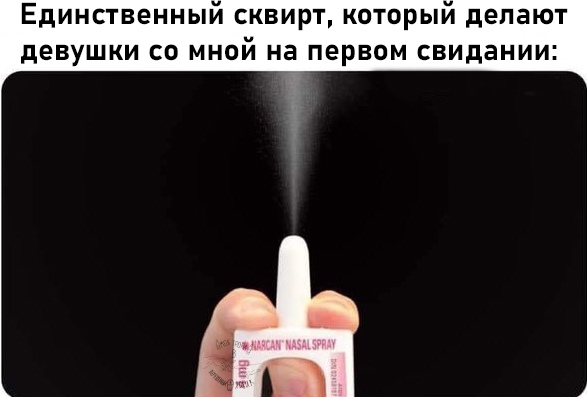 Anticholinergic nasal sprays
Anticholinergic nasal sprays
This type of nasal spray is best to treat a runny nose. They reduce the amount of mucus that your nose produces and are suitable for a variety of causes of nasal blockage from allergic to non-allergic.
Unlike antihistamines and steroid spray, anticholinergic sprays will not relieve the inflammation and congestion. The side effect profile is typically mild.
Anticholinergic sprays work by blocking receptors which ordinarily lead to activation of nasal mucus glands and hence mucus production [4].
Summary: good for snorers with a runny nose
Example: ipratropium bromide
4. Decongestant nasal sprays
Congestion in the nose is caused by dilation (expansion) of blood vessels, reducing the space for air to flow freely. Decongestant nasal sprays work by constricting these blood vessels to widen your nasal passages.
Decongestants can be very effective in relieving a blocked nose in the short term, and most can be bought over-the-counter. However they are not suitable for everybody. Children, pregnant or breastfeeding women and people with high blood pressure shouldn’t use decongestant nasal sprays (this is because constricting blood vessels further increases blood pressure).
However they are not suitable for everybody. Children, pregnant or breastfeeding women and people with high blood pressure shouldn’t use decongestant nasal sprays (this is because constricting blood vessels further increases blood pressure).
Decongestants are suitable for short-term use: a few times a day for no longer than a week. This is because overuse of decongestants can cause rebound congestion where the spray starts to have the opposite effect and cause nasal stuffiness.
Summary: good for nasal blockage caused by short-lived problems like a cold, should only be used short-term to avoid rebound congestion
Example: pseudoephedrine
5. Mast cell inhibitors
This type of nasal spray is suitable for those who suffer from seasonal allergies and can predict when their symptoms will arise. Because mast cell inhibitors are preventative, they need to be used a couple of weeks before the onset of symptoms.
These sprays work in a similar fashion to antihistamines in that they stop mast cells (a type of immune cell) from breaking down and releasing inflammation-causing histamine.
Summary: suitable to long-term sufferers of hay fever who can time the onset of their symptoms
Example: cromolyn
6. Saline nasal sprays
Saline nasal sprays are non-medicated. Instead, they are a mixture of water and salt (sodium chloride) which moisturize your nasal passages to soothe inflammation and can also break down excess mucus.
This type of spray works in a very similar way to using a neti-pot, the only difference is the mode of delivery. Because saline nasal sprays are non-medicated (though do read the label, some are “combination” sprays containing some medication), they can be used by nearly everyone, including children.
Saline nasal sprays can also be used to make other snoring remedies work better. Steroid sprays don’t work well if there is a lot of mucus present. Using a saline spray first can help break up excess mucus, allowing medicated sprays to work more effectively. Saline sprays can also help to moisten your airways before using CPAP.
Steroid sprays don’t work well if there is a lot of mucus present. Using a saline spray first can help break up excess mucus, allowing medicated sprays to work more effectively. Saline sprays can also help to moisten your airways before using CPAP.
Summary: suitable for all and useful for soothing chronic nasal inflammation and clearing excess mucus, can be used as an adjunct to other remedies
Was this post helpful?
Let us know if you liked the post. That’s the only way we can improve.
Share this article
Page not found – The American Academy of Otolaryngic Allergy
08/01/21: Scientific Abstract Submission Deadline
Learn More
09/06/21: Membership Application Deadline to be voted in at the 2021 Annual Meeting
12/01/21: Research Grant Cycle
Learn more
04/01/22: Fellow Exam Application Deadline
Learn more
06/01/22: Research Grant Cycle
Learn more
06/26/22: Membership Application Deadline to be eligible for AAOA Member rate for the 2022 Basic Course
Our 2021 AAOA Basic Course in Allergy & Immunology will be launched June 1st: Over 11 hrs of pre-learning, on-demand will set you up to gain the full value of our curriculum and engage in the live-stream session.
Live Stream July 8-11 will offer unique learning formats to offer learners the core concepts of allergy diagnosis and management. Join us and test your pre-work efforts for our Immunology & Pharmacotheapy Trivia Slams; Great Debates on Environmental Controls; Allergen Testing Panel “Bake Off,” Late Night with Dr. Levy, AAOA’s Escape Room Expedition, Hands On Testing and Dose Calculation Practica, Office Tours, and more.
Structured for otolaryngologists integrating more allergy assessment and management into their practice, AAOA members providing specialized allergy care who need to remain current with literature-based evidence and practice trends, residents, PA/NPs who work in otolaryngology, and allied health staff who support their physicians in the management of allergic patients. The Basic Course offers unique opportunities to learn the state of the art in allergy patient care. Learn More
IFAR Impact Factor: 2.454
IFAR Featured Content: COVID-19 – Free Access
Endonasal instrumentation and aerosolization risk in the era of COVID‐19: simulation, literature review, and proposed mitigation strategies . Read More
Read More
90,000 Addiction to drops and nasal sprays: causes, symptoms, how to get rid of
A stuffy nose significantly reduces the quality of life of any person. Most people in such situations resort to the help of special nasal drops and sprays. There are several types of liquid nasal medicines that differ in both their composition and mechanism of action and therapeutic effect.
The cause of nasal congestion is inflammation and swelling of the nasal passages, which accompany the development of rhinitis of a different nature.Decongestant nasal drops and sprays constrict blood vessels near the nasal passages. It reduces inflammation, relieves swelling and makes breathing easier.
Over time, patients who regularly take vasoconstrictor drops develop dependence on the action of these drugs. However, of the huge assortment of nasal sprays and drops that modern pharmacy offers, only a few can lead to the appearance of such an addiction and only due to non-compliance with the rules of treatment.
Nasal spray types
Nasal medicines are medicines that are administered through the nose. For the treatment of congestion of various natures, nasal drops or spray may contain active ingredients of four types :
- Saline;
- Hormonal;
- Antiallergic;
- Vasoconstrictor.
Salt spray
This category includes sprays and drops based on salt solutions.Their mechanism of action is more similar to the procedure for flushing and cleaning the nasal passages. Allergens, dust and pathogens enter the nasal passage along with the inhaled air. The body reacts unambiguously and secretes mucus in order to get rid of irritants before they cause inflammation. Saline drops and sprays work in a similar way – they help evacuate mucus from the nasal passage and thus make breathing easier. However, many salt-based drops contain preservatives that cause irritation if the inner nasal cavities are inflamed or have microcracks.
Hormone Sprays
Some nasal sprays and drops contain corticosteroids to help relieve swelling. Most often, hormonal sprays are used to relieve nasal congestion caused by an allergen or other irritant.
Contrary to popular belief, hormonal sprays are completely safe. They act locally, are not absorbed into the systemic circulation, do not harm the mucous membrane and do not affect the blood vessels of the heart and brain.That is why they are allowed for long-term use, but only as directed by a doctor and under his supervision.
Antiallergic sprays
Antiallergic sprays contain antihistamines that relieve nasal congestion caused by the body’s immune response to an allergen. These substances chemically block histamine, which is responsible for the development of swelling, itching, sneezing, and runny nose. The peak of the use of such drops and sprays falls on the period of exacerbation of seasonal allergies.
A great advantage of antihistamine sprays is the ability to introduce the drug directly into the area of development of edema and inflammation. Using a nasal spray, the patient applies the drug locally. This helps to avoid unpleasant side effects in the form of drowsiness, irritability, distraction of attention, weakness, which accompany the intake of antihistamines in the form of tablets and syrups.
Vasoconstrictor sprays
Most vasoconstrictor sprays contain oxymetazoline or xylometazoline.These substances are structural analogs of the hormone adrenaline, which in stressful situations causes an increase in blood pressure, increases heart rate, and also constricts blood vessels. Thus, drugs xylo- and oxymetazoline are the most prescribed for the flu, colds and other respiratory diseases. They constrict blood vessels, reduce swelling, inflammation, and mucus production.
The most common side effects of vasoconstrictor drops and sprays are:
- Burning sensation in the nose;
- Dry nose;
- Sneezing
- Nausea;
- Headache;
- Nervousness;
- Difficulty falling asleep;
- Pulse disorders.

When using vasoconstrictor nasal drops for longer than the permitted period, the patient may develop drug dependence to the use of this drug, which is accompanied by unpleasant, and in case of neglect of the disease, dangerous symptoms.
Causes of addiction to nasal drops and sprays
In fact, dependence on taking nasal drops and sprays is manifested in the development of tolerance to the active substance of the drug.The essence of this phenomenon lies in the need for a constant increase in the dose of the drug to obtain a therapeutic effect. With regular external stimulation, the body relaxes.
In other words, in order to feel relief, instead of 1-2 irrigations of the mucous membrane, the patient has to “fill” the nose with drops in doses that are several times higher than the recommended ones. Over time, there comes a point when neither an increase in dosage, nor even a replacement of the manufacturer of vasoconstrictor drops leads to the removal of nasal congestion.
Grippostad, Lazorin, Tizin, Nazivin, Nazalong, Noxprey, Nazol, Evkazolin, Galazolin, Sanorin are just a few drugs that can cause addiction if the rules of admission are not followed.
The first signs of addiction to nasal drops and sprays can be identified by the characteristic symptoms.
Symptoms of dependence on vasoconstrictor drops and sprays
The main symptom of the development of dependence on the intake of nasal sprays and drops is an increase in the frequency of taking the drug during the day. At the same time, nasal congestion quickly returns, and in order to restore normal nasal breathing, you have to use the spray more and more often throughout the day.
In addition, the patient may feel itching and burning in the nose, pressing headache, emotional instability, sore throat, loss of smell and general discomfort . Also a runny nose returns, accompanied by coughing and sneezing.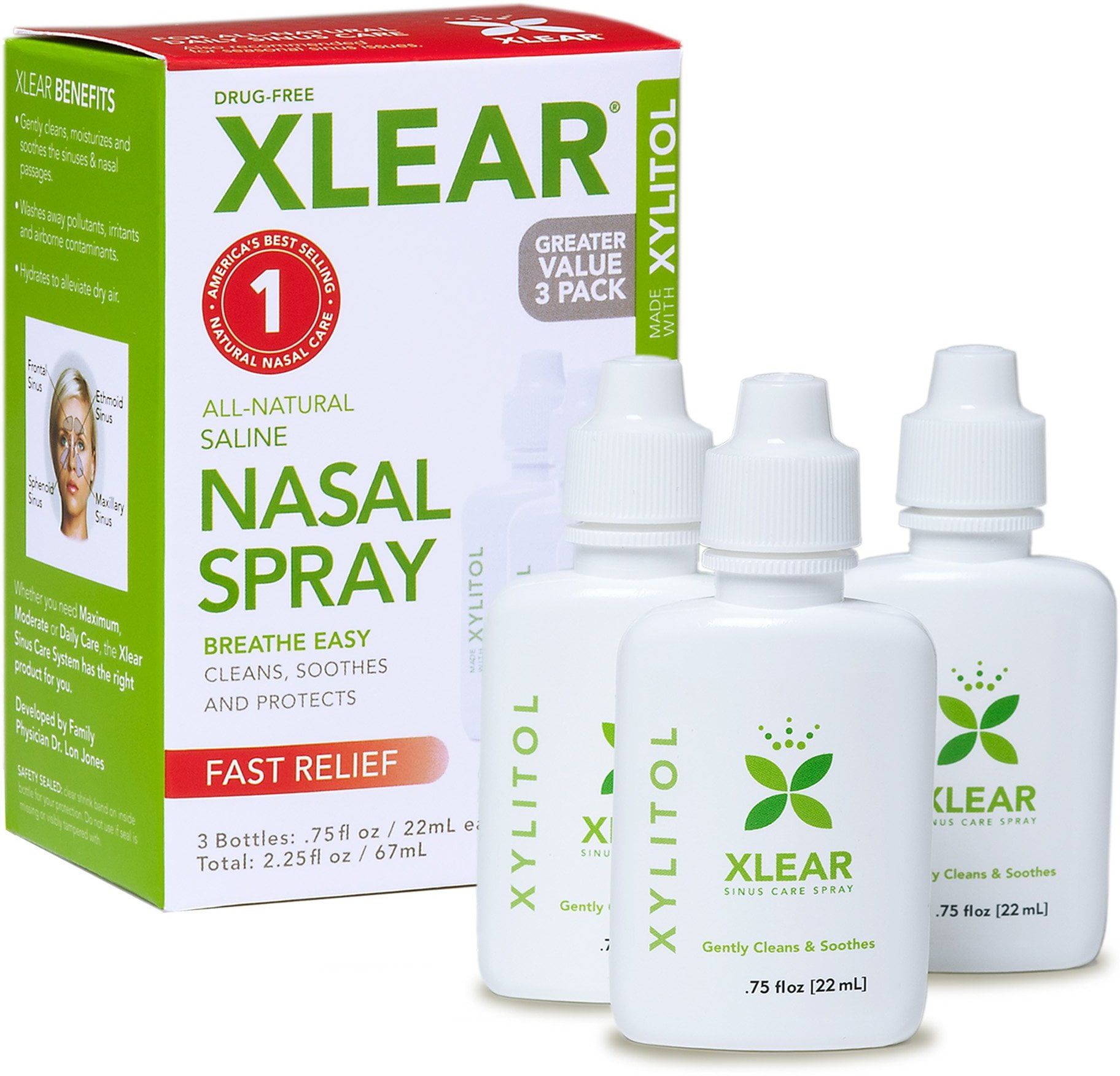
The extreme degree of uncontrolled intake of vasoconstrictor nasal sprays is the development of drug-induced rhinitis. The cause of this disease is chemical damage to the nasal mucosa as a result of prolonged or frequent use of nasal vasoconstrictors. As a result, the blood vessels stop responding adequately to the drug, the effectiveness of taking the drug decreases, and in order to relieve nasal congestion, the patient needs to use drops even more often.
How to overcome addiction to the use of vasoconstrictor drops and sprays
The first step in the treatment of addiction to vasoconstrictor drops is to completely stop taking them.The patient needs to realize and accept the fact that he has become addicted to taking nasal drops or sprays.
The next step is to immediately seek help from an otolaryngologist. The medical specialist will interview the patient, prescribe the necessary diagnostics, collect test data and make a diagnosis.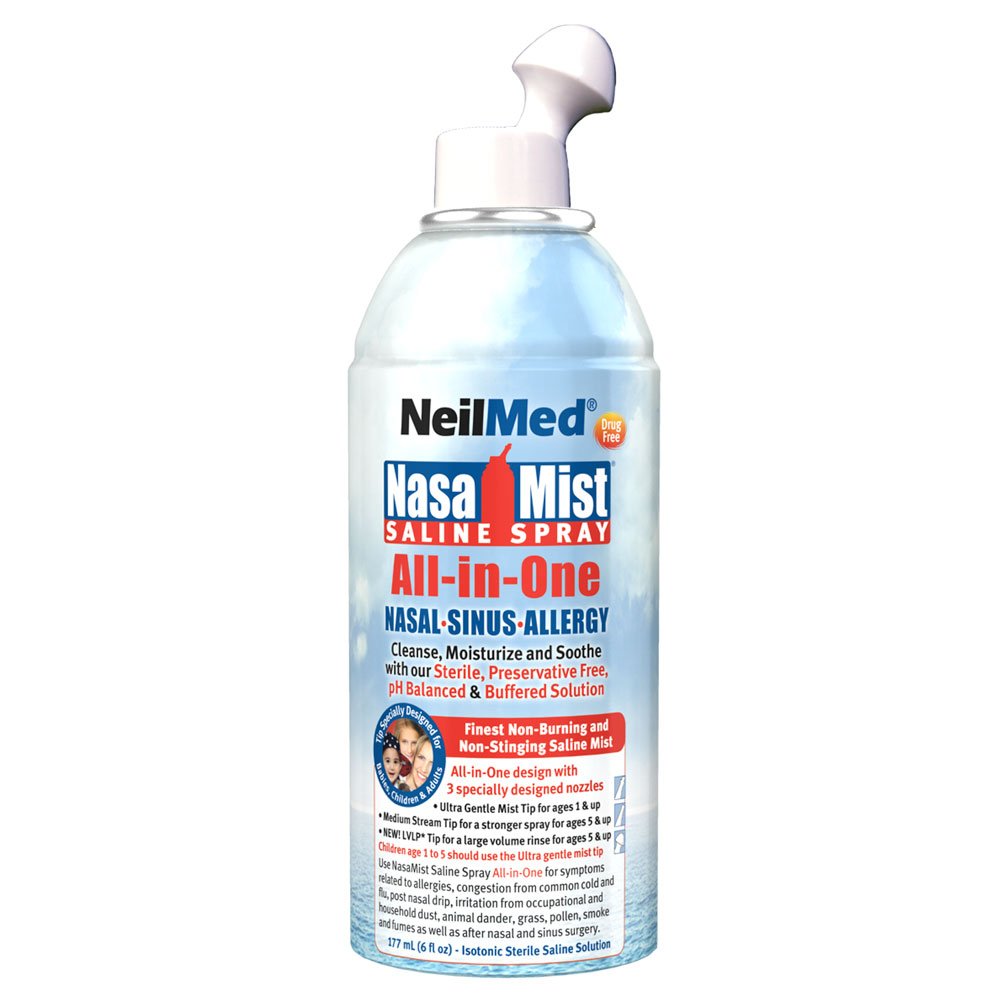 When confirming concerns about the development of addiction to nasal drops or spray, the doctor will select the only correct individual treatment for each patient.
When confirming concerns about the development of addiction to nasal drops or spray, the doctor will select the only correct individual treatment for each patient.
For the treatment of drug dependence, depending on the severity and neglect of the disease, therapeutic, physiotherapeutic and surgical methods are used for treatment.
Therapeutic Addiction Treatment
To eliminate addiction to vasoconstrictor nasal drugs, it is necessary to completely exclude the use of these drugs. The doctor may prescribe hormone drops or sprays that contain clucocorticosteroids that can make the patient breathe easier without unwanted side effects.These remedies relieve inflammation and swelling in the nasal passages, eliminate unpleasant symptoms and improve the condition of the nasal mucosa.
Addiction treatment with physiotherapy
Additionally, the ENT doctor may prescribe certain physiotherapy procedures to improve the patient’s condition.
These procedures include:
- UV therapy;
- magnetotherapy;
- laser therapy;
- rinsing the sinuses with saline solutions;
- tube quartzization and others
Addiction Surgery
In cases where therapeutic treatment is ineffective or the effect of taking medications is insufficient for the patient’s recovery, urgent surgical intervention is necessary.
The main reason for the deterioration of the patient’s condition in the event of dependence on vasoconstrictor drops is the development of edema and a decrease in the lumen of the nasal passage. Therefore, all surgical interventions are aimed at recovery.
Surgical treatments include:
- radio wave reduction;
- vasotomy;
- vaporization and more.
Which nasal sprays and drops are non-addictive?
Modern steroid sprays are non-addictive and suitable for long-term treatment of nasal congestion.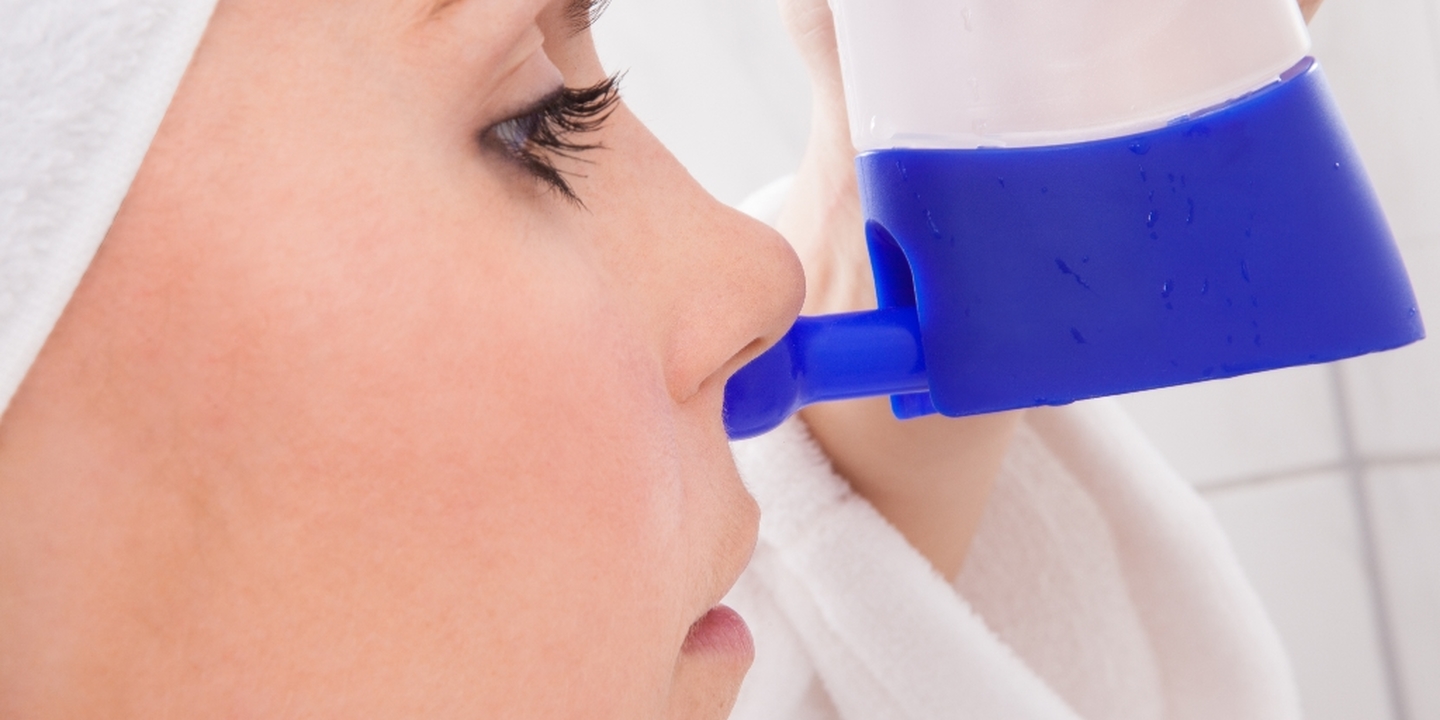 These medicines are safe and suitable for most patients.
These medicines are safe and suitable for most patients.
Avamis, Flix, Nazonex, Polydexa, Fliksonase, Beconase, Tafen Nazal, Glensprey active – this is an incomplete list of nasal sprays that contain glucocorticosteroids.
However, before using steroid nasal sprays, it is imperative to consult with an otolaryngologist. Only an ENT doctor will be able to make the correct diagnosis and correctly select the appropriate effective and safe treatment.
90,000 Life with zilch. How To Use A Nasal Spray Correctly | Healthy life | Health
In the modern world, when nasal sprays stand in slender rows in pharmacies, walking with a sniffling nose for a whole week is simply unfashionable and frivolous. And without treatment, a banal rhinitis is often complicated by sinusitis, which requires much more serious treatment.
That is why a runny nose can and should be treated, it allows you to get rid of unpleasant and unaesthetic symptoms in less than a week. And also to prevent various complications that lengthen and aggravate the course of rhinitis.
And also to prevent various complications that lengthen and aggravate the course of rhinitis.
Sprays vs. drops. Advantages
Nasal spray is a very effective dosage form of the drug that has a number of advantages over drops.
First advantage . Sprays provide accurate drug consumption, which minimizes the risk of overdose. Almost no one succeeds in calculating 2-3 drops, therefore, treatment by eye is obtained, fraught with various complications.With sprays, everything is much simpler – the manufacturer indicates in the instructions either the number of zips or the duration of irrigation in seconds. It is quite difficult to make mistakes and overdo it!
Second advantage . The medicinal substance in the spray is in a finely dispersed state, due to which it is delivered to all, even the most distant parts of the nasal cavity. Could it be drops? They are known to pass through the nose in transit and flow down the back of the pharynx (often causing irritation).
Third advantage . Sprays are simply more convenient to use.
An important point: nasal sprays are not recommended for use in babies under one year old. The fact is that drugs in the form of an aerosol can reflexively provoke a spasm of the larynx. And this, in turn, is fraught with breathing problems, up to a complete stop.
Sprays can cause runny nose!
Medicated rhinitis is a problem resulting from prolonged use of vasoconstrictor sprays.The bottom line is that these sprays contain substances that cause vasoconstriction. And they really help relieve swelling and cope with nasal congestion, but every competent doctor does not get tired of repeating: you can use it only for three, maximum five days! And these are not just words – the fact is that addiction arises very quickly. This happens for several reasons at once:
- vessels cannot maintain their tone on their own, since vasoconstrictor drops suppress the synthesis of norepinephrine, which is responsible for vasospasm;
- atrophy of the nasal mucosa develops.

The main manifestation of rhinitis medication is a persistent runny nose and persistent nasal congestion. Patients complain of headaches and inability to smell. As a rule, the doctor prescribes hormonal drugs in such cases, and in the absence of the effect of conservative treatment, unfortunately, an operation cannot be dispensed with.
Several years ago, scientists developed a neuropeptide that can act on receptors in brain cells. However, it turned out to be impossible to deliver this substance to the brain in the usual way.The scheme “tablets – gastrointestinal tract – blood – brain” does not work due to the large size of the neuropeptide molecule.
Canadian scientists from the Center for Addiction and Mental Health have developed an innovative drug for the treatment of depression –
nasal spray. Currently, the drug is being tested, the results of which are already inspiring hope for a breakthrough in the treatment of depression in specialists!
Classification
Currently, a wide variety of nasal sprays are lined up on the shelves of pharmacies. Nasal sprays have a different composition and, as a result, purpose. How to choose?
Nasal sprays have a different composition and, as a result, purpose. How to choose?
Homeopathic nasal spray
What is Homeopathy? This is an alternative therapy, which is based on a simple principle: to use for the treatment of microdoses of a substance that, in a usual dose, not only will not heal, but, on the contrary, will provoke the symptoms of the disease. The law of homeopathy says “like cures like.”
I would like to immediately notice that all sprays of this nature are tested on healthy volunteers – the agent is administered in a large dose and specialists can study the mechanism of its action.Based on these studies, the drug is being developed.
Such sprays are prescribed for infectious or allergic rhinitis.
Most doctors are very skeptical about homeopathic sprays, but many patients report improvements with such therapy. This question is highly debatable, and the final decision, as a rule, is taken individually.
Antiviral nasal sprays
Antiviral sprays usually contain interferon. This substance is produced by our body to fight viruses. With a decrease in immunity or with a massive attack of the pathogen, which occurs annually during an ARVI epidemic in autumn and winter, the body’s own defense is not enough. In such a situation, antiviral spray comes to the rescue. It blocks the multiplication of viruses in the nasal cavity and their spread throughout the body.
This substance is produced by our body to fight viruses. With a decrease in immunity or with a massive attack of the pathogen, which occurs annually during an ARVI epidemic in autumn and winter, the body’s own defense is not enough. In such a situation, antiviral spray comes to the rescue. It blocks the multiplication of viruses in the nasal cavity and their spread throughout the body.
An important point: it is recommended to start using an antiviral spray at the first symptoms of a cold, since it is the nose that serves as the initial dislocation of the pathogen.
Vasoconstrictor nasal sprays
Without a doubt, this is one of the most popular spray options, because nasal congestion is a very unpleasant condition that significantly complicates life. If you can’t breathe normally, you won’t be able to get enough sleep and rest, study and work. Therefore, at the first sign of a runny nose, we run to the pharmacy and buy a vasoconstrictor spray – and we get the desired relief.![]()
However, such preparations are not so simple.First, they don’t cure! This must be understood: the drug relieves swelling in the nasal cavity due to vasoconstriction, which makes breathing easier. Temporarily! But there is no way to recover with their help. And secondly, such sprays cannot be used for more than 3-5 days, otherwise there is a great risk of earning … a runny nose! Already medicated. But about him a little later.
Antibacterial nasal spray
As the name implies, this type of nasal sprays contains a broad-spectrum antibiotic.Such a remedy is prescribed already with a runny nose, complicated by a bacterial infection. Unfortunately, self-medication is currently flourishing – instead of going to the doctor even with prolonged rhinitis, or, on the contrary, wanting to kill the infection at the root, at the first sign of nasal congestion, a person buys an antibacterial spray.
This is a big mistake: firstly, it simply will not help with ARVI, since the antibiotic is powerless against viruses. And secondly, the uncontrolled use of such drugs leads to mutations in bacteria and the emergence of persistent resistance, that is, resistance to drugs.Roughly speaking, the time will come when you really need an antibacterial spray, but it will no longer be able to help.
Sprays with sea water
Rinsing the nasal cavity with sea water has been used since the time of Hippocrates. Then, of course, they did not know either the composition of water or its beneficial effects, but they saw the desired effect.
Now we can arrange such a spray on the shelves and highlight all its useful properties.
Firstly, a stream of natural seawater mechanically cleans the nasal cavity from crusts, mucus, viruses, bacteria and allergens.This helps prevent inflammation from spreading to the paranasal sinuses and middle ear, and prepares the mucosa for drug use. Secondly, ions of magnesium, zinc, selenium and other trace elements of sea water enhance local immunity, helping the body itself to resist viral and bacterial infections.
Blow your nose after rinsing your nose with seawater. And you need to do this correctly – you need to blow out each nostril separately, while covering the other.Do not blow both nostrils at the same time – this increases the pressure in the nose and the infection can enter the ear through the Eustachian tube, causing inflammation.
Hormonal nasal sprays
Such sprays are, without a doubt, a serious medicinal “artillery”. Hormones can block the main pathways of inflammation, including allergic inflammation. They come to the rescue in severe cases, with rhinitis and adenoiditis.
Hormonal sprays have fewer side effects than systemic drugs.However, no one is immune from negative reactions. Some patients report mucosal irritation and nosebleeds. In severe cases, even perforation is possible, that is, the formation of a hole in the septum.
Combined nasal sprays
Such preparations contain several medicines at once. For example, sprays with hormones and antibiotics: they perform two functions at once – relieve swelling and fight severe inflammation. Or a spray with a vasoconstrictor component and sea water – such a remedy effectively fights nasal congestion, but does not develop dryness.
How to use nasal spray correctly
The following guidelines should be followed when using any nasal spray.
- Before using the medicinal spray, it is important to clear the nasal passages (this does not apply to preparations based on seawater, they can just be used to cleanse the nose).
- When injecting the drug, you need to close one nostril, slightly pressing it down with your finger.
- Place the thumb of the other hand on the base of the can, and insert the tip into the free nostril by half a centimeter.
- After that, you need to inhale and simultaneously press the piston – the drug should be injected only while inhaling.
- It is not recommended to sneeze and blow your nose for 10 minutes to allow the drug to be absorbed.
Various types of intranasal steroids for chronic rhinosinusitis
Review question
We reviewed the evidence for the benefits and harms of various types of intranasal (nasal) steroids in people with chronic rhinosinusitis.
Relevance
Chronic rhinosinusitis is a common condition / disease characterized by inflammation of the nose and paranasal sinuses (a group of air-filled spaces behind the nose, eyes and cheeks). People with chronic rhinosinusitis have at least two or more of the following symptoms for at least 12 weeks: nasal congestion, nasal discharge or runny nose, pain or pressure in the face, and / or decreased sense of smell (hyposmia).Some people also have nasal polyps, which are grape-like swellings of the normal mucous membrane inside the nasal passages and sinuses. Topical (intranasal) corticosteroids are used to reduce inflammation to reduce symptoms.
Research characteristics
In this review, we included 9 randomized controlled trials (RCTs) with a total of 910 participants. The studies varied in sample size: some were small, with only 20 participants / patients, while others included more than 200 participants.Most studies included adult patients, but only one study included children. In studies involving adults, the majority of participants were male (72% to 79%). In all studies, participants had chronic rhinosinusitis and polyps (nasal polyps). The studies either compared different types of steroids (three studies), high doses versus low doses of steroids (five studies), steroids twice a day versus once a day, or different routes of administration (aqueous nasal spray versus aerosol – one study).All studies had a placebo group.
Key results and quality of evidence
Various steroids: fluticasone propionate versus beclomethasone dipropionate
Two small studies (56 participants, unclear risk of bias) assessed disease severity and the primary steroid side effect, epistaxis (nosebleeds), but not other outcomes. No difference was found between the two steroids, but we rated the quality of the evidence as very low .
Various steroids: fluticasone propionate versus mometasone furoate
One study (100 participants, unclear risk of bias) found no difference in disease severity (nasal symptom scores). We rated the quality of this evidence as very low .
High versus low doses of steroids
We found five studies (663 participants, with low or unclear risk of bias) that compared high and low doses of steroids, three using mometasone furoate (400 mcg versus 200 mcg in adults and older children, 200 mcg versus 100 mcg in older children), and two using drops of fluticasone propionate (800 mcg versus 400 mcg).Efficacy (disease severity and nasal polyp size) was similar in the high and low dose groups ( low-quality evidence ). Although all studies reported “ greater improvement in polyp severity in the high dose group, the significance of this is unclear because the improvement was small.
The main side effect, epistaxis, was more common when higher doses were used (moderate quality of evidence).
Different delivery methods: aqueous nasal spray versus aerosol spray
We found only one poorly presented study with a high risk of bias.It was unclear how many participants there were: 91 were accepted into 3 groups. There were also significant differences between the participants in the two groups when they began the study. We were unable to draw any meaningful conclusions from this study.
Conclusions
We found no evidence that one type of intranasal steroid is more effective than another in patients with chronic rhinosinusitis, nor that higher doses are better than low doses, nor that the effectiveness of a spray is different from an aerosol.We found no studies that compared nasal drops to spray. We found moderate-quality evidence of an increased risk of (epistaxis) as a side effect of treatment with higher doses.
More research is needed in this area. Future research needs to be well planned: it should measure quality of life specifically associated with chronic rhinosinusitis and side effects as outcomes; and to study what happens to patients taking intranasal steroids in the long term.
XIMELIN – What drops to choose for nasal congestion?
Every person periodically faces such an unpleasant problem as nasal congestion . Most often, the use of local vasoconstrictor drugs, decongestants, is recommended as a symptomatic treatment. Medicines of this group relieve nasal breathing in a matter of minutes. But how to choose the best option among a wide range of products?
Causes and mechanism of nasal congestion
Nasal congestion is a consequence of the developing swelling of the nasal mucosa.There are 3 main reasons that lead to difficulty in nasal breathing:
- Infection (viral or bacterial) – microbial inflammation is inevitably accompanied by mucosal edema.
- Allergens in the inhaled air. Cause allergic rhinitis or hay fever. It is based on non-microbial inflammation, in which edema is also present.
- Vasomotor disorders. Manifested by a violation of vascular tone, which are also accompanied by edema.
How to deal with nasal congestion
A universal solution to help cope with swelling of the nasal mucosa is the use of vasoconstrictor drugs.They suppress the mechanism of nasal congestion at an early stage of the pathological process, when vasodilation occurs. But before deciding on a particular drug, it is necessary to take into account its effectiveness and safety. From this point of view, it is worth paying attention to the Xymelin line of nasal sprays and drops, which have established themselves as affordable, effective and fairly safe drugs for the treatment of any type of runny nose and nasal congestion.
Which Xymelin should I choose?
Since there are two forms of the drug: spray and drops, the question arises: “What is better to choose?”The modern form of the drug is a spray. Due to the high quality of the dispensing device of the Xymelin vial, a high efficiency of spraying of the metered spray is ensured, which is characterized by a significant and uniform deposition of the active substances on the nasal mucosa, and, consequently, the maximum therapeutic activity of the active substance (xylometazoline hydrochloride). However, if it seems to you that the drops are a more familiar form, then use them – the effectiveness of the drug does not decrease.
Another argument in favor of Xymelin spray is the presence of several varieties of the drug designed for specific situations:
Xymelin Eco – if nasal congestion is caused by an allergic reaction. The drug is free from preservatives – there is no benzalkonium chloride in it, therefore Xymelin Eco acts carefully without burning sensation and irritation.
Xymelin Eco with menthol – suitable for severe nasal congestion caused by allergies.Additional enrichment of the drug with eucalyptol and menthol contributes to an even greater sensation of relief of nasal breathing. Xymelin Eco with menthol can also be used in children from the age of 10.
Xymelin Extra – especially effective in eliminating congestion accompanied by abundant nasal discharge. True, its use is intended only for adults from the age of 18.
There are 2 dosages of the drug “Xymelin” 0.05%, which are suitable for children from 2 to 6 years old and 0.1%, which can be recommended for children over 6 years of age and adults.
Advantages of “Xymelin” over other vasoconstrictor drugs
So, what are the features that make it possible to recommend the use of the Xymelin line of drugs for various types of rhinitis in children and adults?
- Convenient form of release. “Xymelin” is available both in drops and in the form of a spray;
- Possibility of safe use in children. According to the recommendations of the instructions for use, Xymelin and Xymelin Eco can be used in children from 2 years of age, and Xymelin Eco with menthol – from 10 years;
- The drug works only locally, narrowing the vessels of the nasal mucosa.Therefore, the likelihood of side effects such as headache, tachycardia, increased blood pressure is minimal;
- Long-term therapeutic effect. After using the drug “Xymelin” a person can forget about a cold for up to 10 – 12 hours, so you need to use it only 2 times a day.
If it flows from the nose – there is only one answer: Choose Xymelin! Takeda cares about your quality of life, making it a better life and relieving nasal congestion and runny nose.
How to use the nasal spray correctly: step by step instructions
How to use the spray
Preparation
- Blow your nose. Make sure you can breathe through your nose (albeit badly). If the nostrils are completely blocked, the spray simply won’t get into all the nasal cavities and won’t work.
- Wash your hands. The last thing you need to do is get another infection in your nose.
- Remove the spray tip cap and make sure the spray is clean and not touching anything other than the inside of your nose.Otherwise, the nostrils can become a habitat for a new virus or bacteria.
Spraying
Spraying rules depend on the type of packaging.
Spray container
- Shake container.
- Keep your head straight.
- Exhale.
- Insert the tip of the container into the nostril about half a centimeter. Be sure to point the spray towards the side of the nose opposite the septum. This will prevent damage to the mucous membrane.
- Pinch the other nostril.
- Press down on the container while taking a deep breath.
- Remove the tip of the container from the nostril and inhale a couple of times through your nose so that the medicine penetrates deeper and does not leak out.
Can with piston
- Shake can. If this is your first time in a day, spray it in the air a couple of times first.
- Tilt your head forward slightly.
- Exhale.
- Insert the tip into the nostril. Remember to keep the nebulizer straight and do not point it at the nasal septum.
- Pinch the other nostril.
- Press with your middle and forefinger on the plunger while inhaling smoothly and deeply.
- Remove the tip of the cartridge from the nose and inhale several times.
Completion
- Remember to close the spray cap.
- Wash your hands.
- Try not to sneeze or blow your nose for at least 10 minutes, otherwise the medicine will come out and not work.
What is important to remember
Beware of allergies
Saygibat Mamaeva
otorhinolaryngologist of the ON Clinic medical center, doctor of the highest category, candidate of medical sciences.
Although nasal sprays are safe for the body (their bioavailability in the blood is practically reduced to zero), in rare cases they can cause allergic reactions in case of individual intolerance. There may be swelling of the soft tissues of the nose, congestion. Very rarely, there may be skin rashes. If symptoms of an allergic reaction appear, you must definitely see a doctor.
Don’t fall prey to a vicious circle
Vasoconstrictor nasal sprays can be addictive.They are usually used to combat nasal congestion. And they really relieve swelling. But if such funds are used for more than seven days, the vessels will forget how to narrow themselves. As a result, the nose will be constantly blocked, even if the runny nose has already passed. And nasal sprays will not help fight the disease, but only aggravate it. The longer you use them, the worse it gets, and this gives you a reason to spray in your nose even more often.
Be prepared for irritation
Different types of sprays can irritate the nasal mucosa.In this case, you begin to feel dry and unpleasant sensations in the nose, it may even begin to bleed. If you used the spray correctly (that is, did not aim the spray at the walls of the nose), try taking a break of 1-2 days. Other moisturizing sprays will help to cope with irritation. They usually contain seawater in their composition. If the discomfort persists or the nose continues to bleed, this is a reason to see a doctor.
Your spray should only be yours
You don’t share your toothbrush with anyone, do you? So it is with the spray.If more than one family member needs it at the same time, you need to buy several packages and not confuse them. Even if you are sure that you have contracted each other, you do not necessarily have the same bacteria or viruses. And it is better not to arrange the exchange of infections with a spray tip.
Read instructions
Although nasal sprays are usually sold over the counter in pharmacies, this does not mean that you do not need to consult a doctor about them or at least read the instructions on the package. Like any medicine, nasal products can be harmful if used incorrectly.
For whom such funds are contraindicated
This is what the otorhinolaryngologist Saygibat Mamaeva says about it: “Vasoconstrictor drugs are contraindicated for people with perforation of the nasal septum. People who are prone to allergies need to be very careful when using nasal sprays and strictly follow the doctor’s recommendations for using the medication. ”
Review of over-the-counter runny nose remedies »Pharmvestnik
Runny nose has many varieties. The most common among them is acute infectious (“cold”) rhinitis, which is one of the main symptoms of ARVI.
Note that in acute respiratory infections, the inflammatory process, in addition to the mucous membrane of the nasal cavity, can also spread to its paranasal sinuses (rhinosinusitis). This is due to the fact that a runny nose disrupts the ventilation of the anastomoses connecting the nasal cavity with its paranasal sinuses; as a result, favorable conditions are created for infectious lesions of the sinuses (“sinusitis”), which are normally sterile.
In addition, rhinitis is a risk factor for the development of otitis media. The reason, again, is a violation of ventilation, this time – the Eustachian tube, which connects the nasal cavity with the middle ear.Thus, contrary to the common joke about “a week and seven days”, the treatment of a cold is not at all meaningless, but helps to hedge against unpleasant complications with the right approach.
If such difficult forms of rhinitis as ozena, atrophic or drug-induced rhinitis, willy-nilly, force patients to turn to ENT, then with uncomplicated infectious rhinitis, “victims”, as a rule, prefer to self-medicate. At the same time, as practice shows, the majority of such patients tend to trust the advice of pharmaceutical specialists: only 41.8% of them come to the pharmacy with a ready request for a specific drug, while the remaining 58.2% simply indicate a symptom that bothers them (“advise something from runny nose “) 1 .
The narrower, the easier
Nasal vasoconstrictors are traditionally used as OTC drugs for emergency relief of a stuffy nose, they are decongestants, they are also alpha-adrenergic agonists: xylometazoline, oxymetazoline, naphazoline, etc. Due to local vasoconstriction, they help quickly reduce swelling, rhinorrhea and facilitate nasal breathing.
Having a fairly quick effect (within a few minutes after administration), nasal decongestants, at the same time, may differ in the duration of its preservation.Xylometazoline and oxymetazoline work the longest (10-12 hours). For most other products, the duration of action does not exceed 6 hours.
Buyers sometimes ask for funds for a cold not only for themselves, but also for children. In this case, it should be borne in mind that, depending on the composition, concentration of the active component and the dosage form, decongestants differ according to age limits (Table 1). At the same time, the smallest patients, of course, need to consult a pediatrician.
Decongestants due to the drying effect on the nasal mucosa are not recommended for atrophic rhinitis (a disease with the formation of crusts on the nasal mucosa). They are categorically contraindicated in rhinitis medicamentous, tk. themselves serve as its cause (with the wrong mode of application).
Other contraindications for nasal vasoconstrictors include pregnancy and lactation, severe cardiovascular disease, prostate adenoma, glaucoma, thyrotoxicosis.In order to avoid the development of medication rhinitis, the course of their use should not exceed 5-7 days (the less, the better).
Spray, drops or gel? The answer to this question is largely determined by the personal preferences of the consumer. At the same time, each of the nasal dosage forms has its own pros and cons, which can affect the choice of the buyer (Table 2).
This is all the salt
The second (and some believe that even the first) main direction in the self-treatment of rhinitis is rinsing the nose with isotonic or hypertonic saline solutions.They cleanse the nasal mucosa from germs and excess mucus, help maintain its normal functional state; solutions of sea and ocean water due to the content of a wide range of minerals also partially reduce inflammation.
An undoubted advantage of saline solutions is a high level of safety. They are allowed for all forms of rhinitis (including for prophylactic use), can be used in pregnant and lactating women. True, it should be borne in mind that means for volumetric lavage of the nose (those that pour into one nostril, pour through the other) are contraindicated in acute otitis media.
Saline drops have no age-related contraindications. Sprays and flushing devices may have different age limits depending on the spray pressure generated (see instructions).
Hypertonic drugs (> 0.9% sodium chloride), in contrast to isotonic ones, have a more pronounced anti-edema effect: creating in the nasal cavity a salt concentration that is increased in comparison with the mucous membrane, they, according to the law of osmosis, “draw out” part of the liquid from there.
Natural range
Sprays, drops, gels with herbal ingredients with antiseptic and anti-inflammatory properties – camphor, eucalyptus oil, menthol, etc. can serve as additional local remedies for a cold.
age up to 2-3 years), nasal phytopreparations can be considered as an alternative to vasoconstrictor drugs, if they are contraindicated for the patient (for example, during pregnancy and lactation 2 ).Sometimes they are even called herbal decongestants, although, of course, the degree of their anti-edema effect is lower than that of true decongestants.
Antivirus for the local network
To suppress the reproduction of pathogenic microbes in the nasal mucosa, to disrupt their penetration into uninfected cells, it is possible to use nasal immunomodulators: sprays or drops with recombinant interferon (IFN), lysates of opportunistic bacteria, sodium deoxyribonate.Some of them have not only local but also systemic immunocorrective action.
The greatest effectiveness of local immunomodulators is observed in the initial stages of ARVI, when viruses begin to actively infect healthy cells of the nasal mucosa. The funds of this group can also be used for prophylactic purposes.
Monopreparations of IFN in the form of drops and spray, as well as its combination with loratadine, should not be combined with nasal vasoconstrictors (decongestants), i.e.because it contributes to additional desiccation of the nasal mucosa.
Nasal IFN monopreparations, its fixed combination with taurine, sodium deoxyribonucleate can be used in pregnant women. Lysates of bacteria and a combination of IFN with the antihistamine component loratadine are contraindicated in this group of patients.
Drops with IFN, sodium deoxyribonucleate have no age restrictions, spray with bacterial lysates is allowed from 3 months. The combination of IFN + loratadine is used only in adults (from 18 years old), IFN + taurine – from 14 years old.
Around and about
In addition to classic medicines, the pharmaceutical market presents a number of homeopathic remedies indicated for the common cold, both in nasal and oral dosage forms. All of them, according to the instructions, can be used in combination with traditional pharmacological agents.
Other objects of additional recommendations for a cold can be:
- therapeutic and prophylactic nasal agent with protargol in the form of tablets, which are diluted in water immediately before use.The resulting solution of silver proteinate has antimicrobial and astringent properties and can be used both for the prevention of rhinitis and in complex (auxiliary) therapy;
- otolaryngological barrier agent based on cellulose powder, which, when introduced into the nasal cavity, creates a mechanical barrier on the mucous membrane that prevents the penetration of viruses. Due to this action, it is suitable for the complex prevention of rhinitis, but not for treatment. May be recommended for use by healthy family members of a pharmacy visitor with a cold;
- banal handkerchiefs and not so trivial cosmetic special products for the care of an inflamed nasolabial triangle.
All of the listed parapharmaceuticals and products, unlike most drugs, have a minimum of restrictions on their use. However, it should be remembered that protargol is not recommended for pregnant and lactating women, and any homeopathy for these conditions requires a doctor’s consultation.
–––––––––––––––––––––––––––––––––––––––––––––––– –––––––––––
1 Pharma-Q, HealthIndex, opinion of pharmacists – Spring 2017 Ipsos Healthcare.
2 The only exception in this regard is the famous “Zvezdochka”, which is not recommended for pregnant and lactating women.
90,000 Australians test COVID-19 nasal spray indoors – Moscow 24, 22.11.2020
Australian virologists have begun testing a nasal spray that can be used before traveling on public transport, visiting a performance or a restaurant. The research is sponsored by Stanford University. The new remedy is supposed to give the body protection from infection for several hours. As an active agent, the spray will include chicken antibodies to the SARS-CoV-2 virus.Read more in the column of scientific observer Nikolai Grinko.
Photo: depositphotos/[email protected]
Today, the largest pharmaceutical companies around the world are testing vaccines against COVID-19, periodically reporting success. But even if tomorrow they all confirm the effectiveness of their drugs and immediately release them on the market, the epidemiological situation will not return to normal instantly.
According to experts, the whole world will need about a year of vaccinations to return to normal life.But the economy cannot wait: restaurants and cafes are losing huge amounts of money, concerts and public events have been canceled, air travel and tourism are also stagnating.
Therefore, many pharmaceutical companies have directed their research in the other direction: they are looking for a means that can temporarily minimize the likelihood of transmission of coronavirus.
Laboratory human antibodies are expensive both in development and in production: for this you have to grow a huge number of cells in bioreactors. It is much easier to obtain chicken antibodies; experts even call this technology unusually low-tech.
Scientists inject the protein of the virus into the chicken’s body, and its immune system generates a strong response. Antibodies – the so-called Y immunoglobulins – appear not only throughout the body, but even in the laid eggs to protect the offspring from possible infection. Researchers collect antibodies from the yolks and produce nasal drops from them. According to preliminary estimates, the dose of such a drug will cost no more than $ 1.
A separate question is whether chicken antibodies to coronavirus will generally work in the human body as it should.The researchers say the chances of this are very high, and to be sure of this, they are testing on volunteers.
It is important to assess not only the likely degree of protection that the spray will give, but also the possible negative reaction of the human body: even if the agent will provide temporary protection, but at the same time cause, for example, an allergy, the tests will be recognized as failed.
The same will happen if it turns out that the drug does not stay in the nasal cavity long enough, since the required protection time should be at least two to three hours.However, the authors of the study claim that they have backup options: in parallel, studies of antibodies of rabbits and hamsters are being conducted.
Ideally, the process should look like this: a person uses a nasal spray before being in a room with a large number of people, for example before a movie show. For some time, his body can resist infecting at least that part of the viruses that are inhaled through the nose. After a couple of hours, the protection weakens, and the treatment can be repeated.
According to scientists, such measures can, if not stop the pandemic, then at least greatly reduce the number of cases and significantly reduce the burden on hospitals. It is likely that even before the general vaccination of mankind, we will be able, albeit temporarily, to contain the spread of the virus with the help of new “low-tech” protective means.

 Prolonged use can be dangerous and can cause rebound congestion or rhinitis medicamentosa. Rebound congestion is increased congestion that results from the overuse of nasal decongestant sprays (Wahid, 2021).
Prolonged use can be dangerous and can cause rebound congestion or rhinitis medicamentosa. Rebound congestion is increased congestion that results from the overuse of nasal decongestant sprays (Wahid, 2021). For best results, use a steroid nasal spray throughout the duration of allergy season. Side effects include irritation and nosebleeds (Akhouri, 2021).
For best results, use a steroid nasal spray throughout the duration of allergy season. Side effects include irritation and nosebleeds (Akhouri, 2021).  g. right-left-right-left).
g. right-left-right-left).  S. in early 2022 for adults and children 6 and older)
S. in early 2022 for adults and children 6 and older) Make sure to follow the directions and use only the recommended amount of medication.
Make sure to follow the directions and use only the recommended amount of medication.